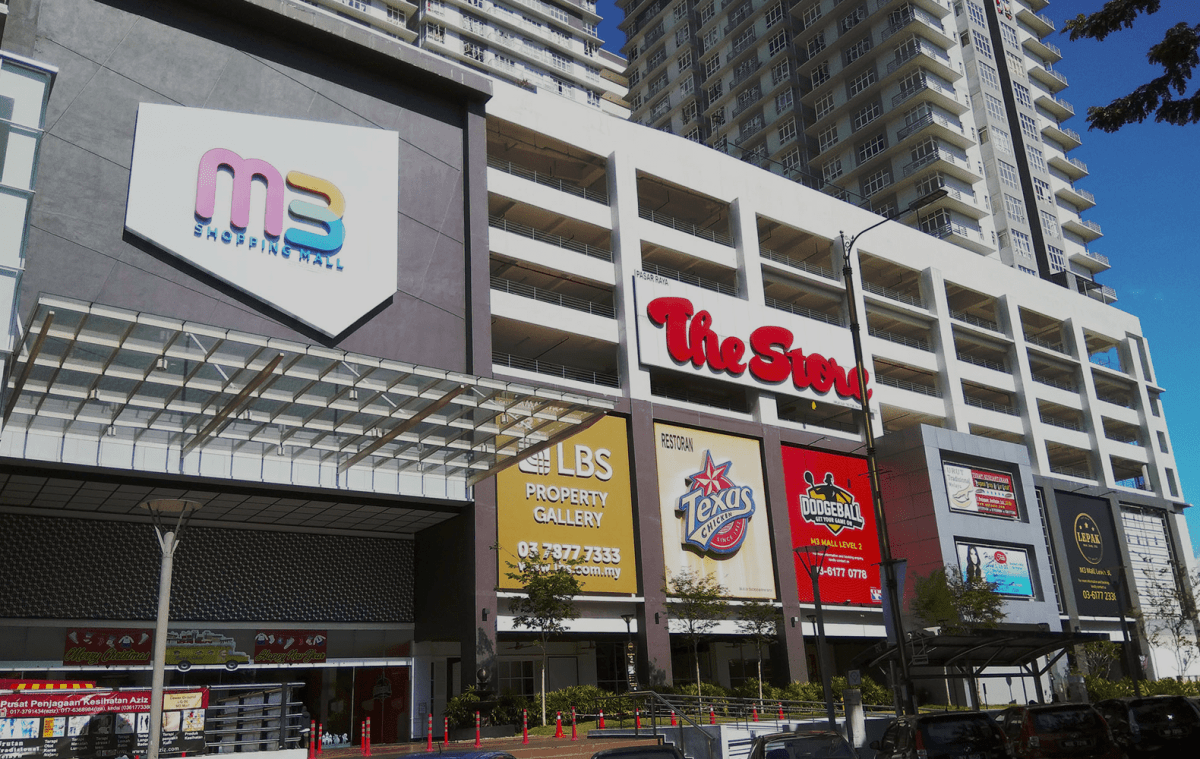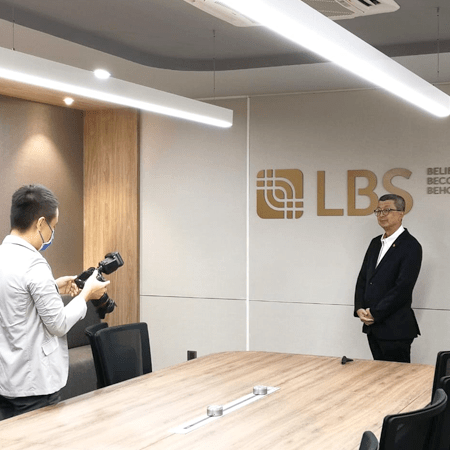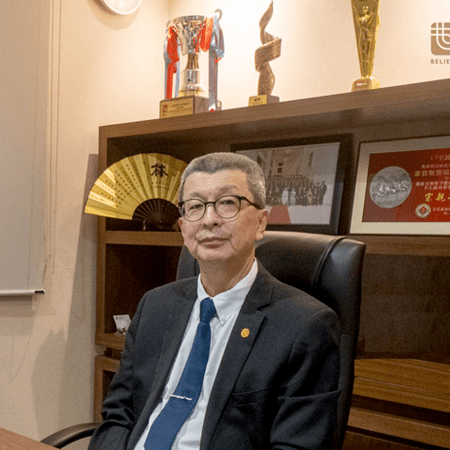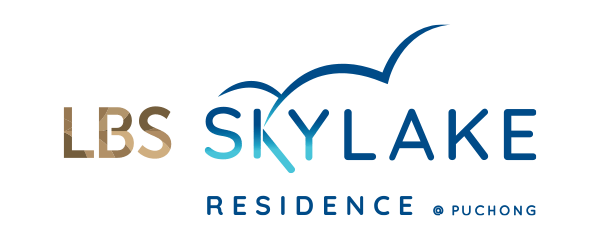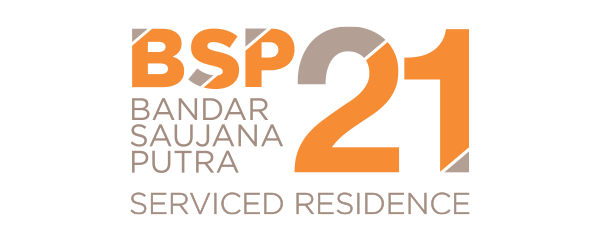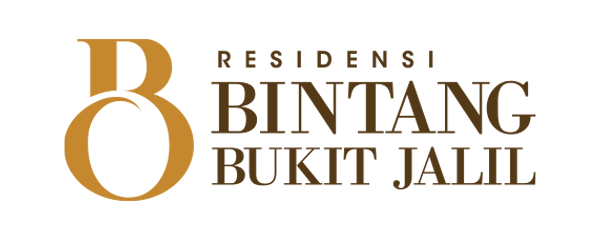LBS Bina Unveils a New Phase of KITA @ Cybersouth
D
on
September 28, 2022
28 September 2022
Untuk Siaran Segera
LBS LANCAR FASA BARU PROJEK KITA @ CYBERSOUTH
● KITA Sejati Menawarkan Rumah Yang Berkualiti Dengan Pilihan Kediaman Yang Berkualiti
Petaling Jaya, 28 September 2022 – LBS Bina Group Berhad (“LBS” atau “Kumpulan”) mengumumkan projek bangunan tinggi ketiga, KITA Sejati, yang terletak di kawasan perbandaran KITA @ Cybersouth dan terdiri daripada pangsapuri servis 24 tingkat sebanyak 1,054-unit dengan anggaran Nilai Pembangunan Kasar (GDV) berjumlah RM 384 juta. Terletak di atas tanah seluas 6.8 ekar, KITA Sejati menawarkan harga mampu milik dengan kediaman yang berkualiti, serta terletak sempurna bersesuaian dengan kawasan persekitarannya.
KITA Sejati terdiri daripada dua variasi dalam susun atur dan saiz, Jenis A, (602 kaki persegi) dengan harga yang ditawarkan bermula daripada RM270,000 dan Jenis B (850 kaki persegi) dengan harga bermula daripada RM389,900 di mana ianya amat sesuai untuk pembeli rumah kali pertama, dan pasangan muda yang baru membina keluarga. Malah, boleh dikatakan bahawa KITA Sejati akan dapat memenuhi keperluan keluarga berskala kecil ataupun pasangan yang baru mendirikan rumahtangga ditambah dengan reka bentuknya yang praktikal sebagai rumah pertama yang sempurna.
Dengan memfokuskan konsep kesejahteraan masyarakat, dipadankan dengan infrastruktur perbandaran yang lengkap dan komprehensif, KITA Sejati komited untuk mewujudkan persekitaran kehidupan yang harmoni dan tenang. Ianya turut menitikberatkan ciri-ciri keselamatan di mana pembangunan ini dilengkapi dengan pagar dan kawalan CCTV di pondok pengawal. Elemen-elemen kemasyarakatan dan kekeluargaan turut disuntik di dalam rekaan KITA Sejati dengan pelbagai kemudahan berorientasikan keluarga seperti dewan serbaguna, gelanggang takraw, kawasan barbeku, kolam renang, gimnasium, gelanggang futsal dan banyak lagi.
Pengerusi Eksekutif LBS, Tan Sri Lim Hock San berkata “LBS telah membina asas yang kukuh bagi mewujudkan rumah dengan suasana yang harmoni bagi sebuah keluarga. Tiga tonggak utama yang LBS patuhi semasa membina projek ini, ialah kebolehcapaian, ketersambungan dan kehidupan bermasyarakat.”
Pembangunan baharu ini terletak berdekatan dengan Putrajaya dan Cyberjaya. KITA Sejati juga dikelilingi oleh hab pendidikan yang terkenal seperti Universiti Xiamen, UiTM Dengkil dan Universiti Heriot Watt serta akses mudah ke beberapa lebuh raya utama termasuk Lebuhraya Putrajaya-Cyberjaya, Lebuhraya Maju (MEX), Lebuhraya Lembah Klang Selatan (SKVE), Lebuhraya Utara Selatan (NSE) dan Lebuhraya Damansara-Puchong (LDP).
Bakal pembeli rumah juga berpeluang untuk memenangi pelbagai hadiah melalui kempen LBS Fabulous Extra 2022-23 apabila mereka membeli rumah dan hartanah LBS bermula daripada sekarang sehingga akhir tahun 2023, di mana antara hadiah menarik yang ditawarkan berupa 22 buah unit Perodua Axia. Pembeli rumah KITA Sejati juga boleh menikmati insentif tambahan, seperti yuran tempahan yang rendah sebanyak RM200, pengecualian yuran guaman, ganjaran kesetiaan, skim pembayaran flexi, yuran keluar sifar dan pakej perabot. (Tertakluk kepada terma dan syarat).
Untuk maklumat lanjut mengenai KITA Sejati, sila lawati galeri jualan KITA @ Cybersouth, dari jam 10.00 pagi hingga 6.00 petang setiap hari. Pembeli rumah yang berminat juga boleh melayari https://virtualfair.lbs.com.my/township/cybersouth/kita-sejati-serviced-apartment/atau hubungi 1700 81 8998.
-tamat-
Untuk Siaran Segera
LBS LANCAR FASA BARU PROJEK KITA @ CYBERSOUTH
● KITA Sejati Menawarkan Rumah Yang Berkualiti Dengan Pilihan Kediaman Yang Berkualiti
Petaling Jaya, 28 September 2022 – LBS Bina Group Berhad (“LBS” atau “Kumpulan”) mengumumkan projek bangunan tinggi ketiga, KITA Sejati, yang terletak di kawasan perbandaran KITA @ Cybersouth dan terdiri daripada pangsapuri servis 24 tingkat sebanyak 1,054-unit dengan anggaran Nilai Pembangunan Kasar (GDV) berjumlah RM 384 juta. Terletak di atas tanah seluas 6.8 ekar, KITA Sejati menawarkan harga mampu milik dengan kediaman yang berkualiti, serta terletak sempurna bersesuaian dengan kawasan persekitarannya.
KITA Sejati terdiri daripada dua variasi dalam susun atur dan saiz, Jenis A, (602 kaki persegi) dengan harga yang ditawarkan bermula daripada RM270,000 dan Jenis B (850 kaki persegi) dengan harga bermula daripada RM389,900 di mana ianya amat sesuai untuk pembeli rumah kali pertama, dan pasangan muda yang baru membina keluarga. Malah, boleh dikatakan bahawa KITA Sejati akan dapat memenuhi keperluan keluarga berskala kecil ataupun pasangan yang baru mendirikan rumahtangga ditambah dengan reka bentuknya yang praktikal sebagai rumah pertama yang sempurna.
Dengan memfokuskan konsep kesejahteraan masyarakat, dipadankan dengan infrastruktur perbandaran yang lengkap dan komprehensif, KITA Sejati komited untuk mewujudkan persekitaran kehidupan yang harmoni dan tenang. Ianya turut menitikberatkan ciri-ciri keselamatan di mana pembangunan ini dilengkapi dengan pagar dan kawalan CCTV di pondok pengawal. Elemen-elemen kemasyarakatan dan kekeluargaan turut disuntik di dalam rekaan KITA Sejati dengan pelbagai kemudahan berorientasikan keluarga seperti dewan serbaguna, gelanggang takraw, kawasan barbeku, kolam renang, gimnasium, gelanggang futsal dan banyak lagi.
Pengerusi Eksekutif LBS, Tan Sri Lim Hock San berkata “LBS telah membina asas yang kukuh bagi mewujudkan rumah dengan suasana yang harmoni bagi sebuah keluarga. Tiga tonggak utama yang LBS patuhi semasa membina projek ini, ialah kebolehcapaian, ketersambungan dan kehidupan bermasyarakat.”
Pembangunan baharu ini terletak berdekatan dengan Putrajaya dan Cyberjaya. KITA Sejati juga dikelilingi oleh hab pendidikan yang terkenal seperti Universiti Xiamen, UiTM Dengkil dan Universiti Heriot Watt serta akses mudah ke beberapa lebuh raya utama termasuk Lebuhraya Putrajaya-Cyberjaya, Lebuhraya Maju (MEX), Lebuhraya Lembah Klang Selatan (SKVE), Lebuhraya Utara Selatan (NSE) dan Lebuhraya Damansara-Puchong (LDP).
Bakal pembeli rumah juga berpeluang untuk memenangi pelbagai hadiah melalui kempen LBS Fabulous Extra 2022-23 apabila mereka membeli rumah dan hartanah LBS bermula daripada sekarang sehingga akhir tahun 2023, di mana antara hadiah menarik yang ditawarkan berupa 22 buah unit Perodua Axia. Pembeli rumah KITA Sejati juga boleh menikmati insentif tambahan, seperti yuran tempahan yang rendah sebanyak RM200, pengecualian yuran guaman, ganjaran kesetiaan, skim pembayaran flexi, yuran keluar sifar dan pakej perabot. (Tertakluk kepada terma dan syarat).
Untuk maklumat lanjut mengenai KITA Sejati, sila lawati galeri jualan KITA @ Cybersouth, dari jam 10.00 pagi hingga 6.00 petang setiap hari. Pembeli rumah yang berminat juga boleh melayari https://virtualfair.lbs.com.my/township/cybersouth/kita-sejati-serviced-apartment/atau hubungi 1700 81 8998.
-tamat-
Mengenai LBS Bina Group Berhad
LBS Bina Group Berhad (LBS), pemaju perbandaran terkemuka di peringkat antarabangsa dengan visi untuk membina ruang inspirasi sempurna merupakan penyandang pelbagai anugerah menerusi projek pembangunannya. Dengan mengutamakan pembeli rumah, LBS telah membina dan membentuk landskap negara selama 30 tahun dan terus memenuhi permintaan pasaran bagi rumah berkualiti dan mampu milik.
Kini, dengan bank tanah di seluruh Malaysia, LBS terus meraih kejayaan dan kekal kukuh dengan kejayaan perbandaran seperti Bandar Saujana Putra, KITA @ Cybersouth di Dengkil, LBS Alam Perdana di Bandar Puncak Alam dan lain-lain lagi. Selain daripada pembangunan hartanah, LBS turut terlibat di dalam pengurusan runcit, perhotelan dan pelancongan.
Kejayaan berterusan yang dilakar oleh LBS adalah hasil kepimpinan Pengerusi Eksekutif Kumpulan LBS, Tan Sri Lim Hock San yang turut dianugerahkan dengan pingat emas sebagai Property Man of the year by Malaysia Property Award (FIABCI) pada tahun 2018 yang merupakan Anugerah ‘Oscar’ dalam industri hartanah. Ketabahan dan kegigihan Tan Sri Lim di dalam mengatasi cabaran industri, serta kepimpinan yang cemerlang dengan pengetahuan ilmu industri hartanah yang unggul di samping nilai integriti dan tanggungjawab menjadi tonggak kepada penerimaan anugerah ini.
Untuk pertanyaan media, hubungi:
Jabatan Komunikasi Korporat, Media & Digital, LBS
Emel : [email protected]
For Immediate Release
LBS BINA UNVEILS A NEW PHASE OF KITA @ CYBERSOUTH
● KITA Sejati Offers the Same Affordability and Quality Residential Options
Petaling Jaya, 28 September 2022 – LBS Bina Group Berhad (“LBS” or the “Group”) announced the third high-rise project, KITA Sejati, primely located in the enclave of KITA @ Cybersouth township which comprises of 24-storey serviced apartment with a total of 1,054-units and estimated Gross Development Value (GDV) of RM 384 million. Sited on a land size of 6.8 acres, KITA Sejati reflects the KITA brand nameby continuing the same affordability and quality residential options, allowing it to fit perfectly in its environment.
KITA Sejati is made up of two variations in layout and size, Type A, (602 sqft) priced from RM270,000 and Type B (850 sqft) from RM389,900, an ideal pricing for 1st time home buyers, and young couples or those starting a family. In fact, it can be said that KITA Sejati is all about meeting the needs of small families and young couples, delivering on practical layouts as a perfect starter home.
With its concept focusing on community well-being, together with comprehensive township infrastructure, KITA Sejati is committed to create a harmonious and tranquil living environment. In terms of safety, it is a gated and guarded development equipped with CCTV at the guardhouse. KITA Sejati is designed with a social and communal living in mind and is equipped with an assortment of family-oriented facilities such as the multipurpose court, takraw court, barbeque pits, swimming pool, gymnasium, futsal court and many more.
LBS Executive Chairman, Tan Sri Lim Hock San said “LBS has developed a solid basis for creating houses that offer a pleasant atmosphere for families. The three main pillars that LBS adheres to while curating our goods are accessibility, connection, and community life.”
This new development is strategically positioned in close proximity to Putrajaya and Cyberjaya. KITA Sejati is also surrounded by established educational hubs such us Xiamen University, UiTM Dengkil and Heriot-Watt University and provides easy access to a number of major highways including Putrajaya-Cyberjaya Expressway, Maju Expressway (MEX), South Klang Valley Expressway (SKVE), North-South Expressway (NSE) and Damansara-Puchong (LDP) Highway.
Potential home buyers also stand a chance to win big at the LBS Fabulous Extra 2022-23 campaign when they purchase a home with LBS from now till the end of the year 2023, with 22 units of Perodua Axia up for grab. KITA Sejati home purchasers also get to enjoy extra incentives, such as a low booking fees of RM200, legal fees exemption, loyalty reward, flexi payment scheme, zero exit fees, and furniture package. (Terms and conditions applied).
For more information about KITA Sejati, please visit KITA @ Cybersouth sales gallery, from 10.00 am to 6.00 pm daily. Interested homebuyers may also visit https://virtualfair.lbs.com.my/township/cybersouth/kita-sejati-serviced-apartment/ or contact 1700 81 8998.
-end-
For Immediate Release
LBS BINA UNVEILS A NEW PHASE OF KITA @ CYBERSOUTH
● KITA Sejati Offers the Same Affordability and Quality Residential Options
Petaling Jaya, 28 September 2022 – LBS Bina Group Berhad (“LBS” or the “Group”) announced the third high-rise project, KITA Sejati, primely located in the enclave of KITA @ Cybersouth township which comprises of 24-storey serviced apartment with a total of 1,054-units and estimated Gross Development Value (GDV) of RM 384 million. Sited on a land size of 6.8 acres, KITA Sejati reflects the KITA brand nameby continuing the same affordability and quality residential options, allowing it to fit perfectly in its environment.
KITA Sejati is made up of two variations in layout and size, Type A, (602 sqft) priced from RM270,000 and Type B (850 sqft) from RM389,900, an ideal pricing for 1st time home buyers, and young couples or those starting a family. In fact, it can be said that KITA Sejati is all about meeting the needs of small families and young couples, delivering on practical layouts as a perfect starter home.
With its concept focusing on community well-being, together with comprehensive township infrastructure, KITA Sejati is committed to create a harmonious and tranquil living environment. In terms of safety, it is a gated and guarded development equipped with CCTV at the guardhouse. KITA Sejati is designed with a social and communal living in mind and is equipped with an assortment of family-oriented facilities such as the multipurpose court, takraw court, barbeque pits, swimming pool, gymnasium, futsal court and many more.
LBS Executive Chairman, Tan Sri Lim Hock San said “LBS has developed a solid basis for creating houses that offer a pleasant atmosphere for families. The three main pillars that LBS adheres to while curating our goods are accessibility, connection, and community life.”
This new development is strategically positioned in close proximity to Putrajaya and Cyberjaya. KITA Sejati is also surrounded by established educational hubs such us Xiamen University, UiTM Dengkil and Heriot-Watt University and provides easy access to a number of major highways including Putrajaya-Cyberjaya Expressway, Maju Expressway (MEX), South Klang Valley Expressway (SKVE), North-South Expressway (NSE) and Damansara-Puchong (LDP) Highway.
Potential home buyers also stand a chance to win big at the LBS Fabulous Extra 2022-23 campaign when they purchase a home with LBS from now till the end of the year 2023, with 22 units of Perodua Axia up for grab. KITA Sejati home purchasers also get to enjoy extra incentives, such as a low booking fees of RM200, legal fees exemption, loyalty reward, flexi payment scheme, zero exit fees, and furniture package. (Terms and conditions applied).
For more information about KITA Sejati, please visit KITA @ Cybersouth sales gallery, from 10.00 am to 6.00 pm daily. Interested homebuyers may also visit https://virtualfair.lbs.com.my/township/cybersouth/kita-sejati-serviced-apartment/ or contact 1700 81 8998.
-end-
About LBS Bina Group Berhad
LBS Bina Group Berhad (“LBS”), an internationally recognized developer with a vision for building and inspiring delightful spaces, is a renowned township developer that has amassed numerous awards through their various developments. By placing people at the heart of their approach, LBS has been building and shaping the nation’s landscape for over 30 years while continuing to meet the market demands for quality and affordable homes.
The continued success of LBS is attributed to the leadership of Executive Chairman, Tan Sri Lim Hock San. In recognition of his leadership, Tan Sri Lim was named as the Property Man of the Year by Malaysia Property Award (formerly known as FIABCI Malaysia Property Awards of Distinction or FIABCI Malaysia Awards of Distinction) in 2018, which is the gold standard for developers in the real estate industry. Further recognition received was the “Oscar Award” in the property fraternity. The award was in recognition of Tan Sri Lim’s perseverance and resilience over time within the industry, excellent demonstration of strong leadership, deep industry knowledge and impeccable values of integrity and responsibility.
To date, LBS with vast land banks spread across Malaysia, will continue to grow in stature and strength, through replicating successful townships such as Bandar Saujana Putra to other parts of Selangor including KITA @ Cybersouth in Dengkil, LBS Alam Perdana in Bandar Puncak Alam and so on. Beyond property development, LBS is also venturing into retail management, hospitality and tourism.
For more information, visit https://lbs.com.my/
Prepared by:
Corporate Communication, Media & Digital, LBS
Email: [email protected]
即时发布
林木生集团KITA @ CYBERSOUTH城镇迎新阶段
推介KITA Sejati可负担优质房屋
(八打灵再也28日讯)林木生集团(LBS)宣布,KITA @ Cybersouth城 镇迎来第3个高层项目KITA Sejati。这是24层高的服务式公寓,共有1054 个单位,发展总值(GDV)约3亿8400万令吉。
占地6.8英亩,KITA Sejati体现KITA @ Cybersouth城镇的品牌,即延续可 负担和优质住宅选择,使其完美融入其环境。
KITA Sejati由两种布局组成,即A 型602平方尺,售价为27万令吉起,以 及B型850平方尺,售价从38万9900令吉起,是首购族,年轻夫妇及家庭 的理想价位。事实上,KITA Sejati 是为了满足小家庭和年轻夫妇的需求而 打造,提供实用的布局,作为完美的入门之家。
KITA Sejati以社区福祉为重点,结合完善的城镇基础设施,致力于创造和 谐宁静的生活环境。治安方面,它是个门控和守卫的发展项目,警卫室备 有闭路电视。KITA Sejati 的设计以社会和社区生活为理念与考量,并配备 了各种以家庭为导向的设施,如多功能球场、藤球球场、烧烤场、泳池、 健身房、五人制足球场等等。
林木生集团执行主席丹斯里林福山指出:“本集团已为创造家庭愉快气氛 的房屋,奠定坚实的基础。我们秉持建造房地产的3大核心支柱,即可负 担、交通便捷和社区完善。”
此新推介的发展项目位于战略位置,靠近布城和赛城。KITA Sejati附近有 厦门大学、龙溪玛拉工艺大学(UiTM)、赫瑞瓦特大学(Heriot-Watt University)等数个知名学府。同时,链接多个主要高速公路,如布城-赛 城高速公路、隆布大道(MEX)、南巴生谷大道(SKVE)、南北大道 (NSE) 和白蒲大道 (LDP) 大道。
即日起至2023年12月31日期间,购买林木生集团旗下特定房地产,就有 机会参与LBS FABULOUS EXTRA 2022-23幸运抽奖活动。此幸运抽奖活 动将送出22辆Perodua Axia等诱人奖品。KITA Sejati买家也可享有其他优 惠,如低至200令吉预定费、免律师费、忠诚奖励、弹性付款方案、零退 出费、以及家私配套。
欲知KITA Sejati详情,可在上午10时至傍晚 6时期间,前往
KITA @ Cybersouth销售厅、拨打热线1700 81 8998、或游览虚拟陈列室 https://virtualfair.lbs.com.my/township/cybersouth/kita-sejati-serviced-apartment/,或拨打热线1700 81 8998。
即时发布
林木生集团KITA @ CYBERSOUTH城镇迎新阶段
推介KITA Sejati可负担优质房屋
(八打灵再也28日讯)林木生集团(LBS)宣布,KITA @ Cybersouth城 镇迎来第3个高层项目KITA Sejati。这是24层高的服务式公寓,共有1054 个单位,发展总值(GDV)约3亿8400万令吉。
占地6.8英亩,KITA Sejati体现KITA @ Cybersouth城镇的品牌,即延续可 负担和优质住宅选择,使其完美融入其环境。
KITA Sejati由两种布局组成,即A 型602平方尺,售价为27万令吉起,以 及B型850平方尺,售价从38万9900令吉起,是首购族,年轻夫妇及家庭 的理想价位。事实上,KITA Sejati 是为了满足小家庭和年轻夫妇的需求而 打造,提供实用的布局,作为完美的入门之家。
KITA Sejati以社区福祉为重点,结合完善的城镇基础设施,致力于创造和 谐宁静的生活环境。治安方面,它是个门控和守卫的发展项目,警卫室备 有闭路电视。KITA Sejati 的设计以社会和社区生活为理念与考量,并配备 了各种以家庭为导向的设施,如多功能球场、藤球球场、烧烤场、泳池、 健身房、五人制足球场等等。
林木生集团执行主席丹斯里林福山指出:“本集团已为创造家庭愉快气氛 的房屋,奠定坚实的基础。我们秉持建造房地产的3大核心支柱,即可负 担、交通便捷和社区完善。”
此新推介的发展项目位于战略位置,靠近布城和赛城。KITA Sejati附近有 厦门大学、龙溪玛拉工艺大学(UiTM)、赫瑞瓦特大学(Heriot-Watt University)等数个知名学府。同时,链接多个主要高速公路,如布城-赛 城高速公路、隆布大道(MEX)、南巴生谷大道(SKVE)、南北大道 (NSE) 和白蒲大道 (LDP) 大道。
即日起至2023年12月31日期间,购买林木生集团旗下特定房地产,就有 机会参与LBS FABULOUS EXTRA 2022-23幸运抽奖活动。此幸运抽奖活 动将送出22辆Perodua Axia等诱人奖品。KITA Sejati买家也可享有其他优 惠,如低至200令吉预定费、免律师费、忠诚奖励、弹性付款方案、零退 出费、以及家私配套。
欲知KITA Sejati详情,可在上午10时至傍晚 6时期间,前往
KITA @ Cybersouth销售厅、拨打热线1700 81 8998、或游览虚拟陈列室 https://virtualfair.lbs.com.my/township/cybersouth/kita-sejati-serviced-apartment/,或拨打热线1700 81 8998。
关于林木生集团
屡获大奖的城镇发展商林木生集团(LBS)以打造和创建空间而声名卓著,享誉国际。在30 多年来, LBS秉持着以人为本的核心宗旨,积极建立和塑造国家实景,同时不断满足市场对 优质可负担房屋的需求。
如今,该集团的地库坐落马来西亚黄金地段。LBS以成功建造的太子城(Bandar Saujana Putra)城镇为例,继续在雪兰莪州及其他地区大展蓝图,如建造位于本查阿南的LBS Alam Perdana以及龙溪KITA @ Cybersouth城镇等。林木生集团的地位和实力也因而蓬勃增长, 除了开发房地产,也涉足零售管理、酒店和旅游业。
林木生集团的茁壮成长,归功于集团执行主席丹斯里林福山的卓越领导。丹斯里林福山曾获 多项表彰领导才能的奖项,包括在2018年荣获“世界不动产联盟大马分会(FIABCI Malaysia)颁发至高殊荣的产业风云人物奖,此荣誉也被堪称产业界“奥斯卡金像奖”。丹 斯里林福山出色和强而有力的领导才能、丰富的业界知识、诚信、价值观及责任感,而荣获 此项大奖。
~完~
Imej Jiwa Communications私人有限公司代表林木生集团发新闻稿
Ng Shu Wain E-mail: [email protected]
林木生集团企业通讯、媒体与数码部. E-mail: [email protected]
关于林木生集团
屡获大奖的城镇发展商林木生集团(LBS)以打造和创建空间而声名卓著,享誉国际。在30 多年来, LBS秉持着以人为本的核心宗旨,积极建立和塑造国家实景,同时不断满足市场对 优质可负担房屋的需求。
如今,该集团的地库坐落马来西亚黄金地段。LBS以成功建造的太子城(Bandar Saujana Putra)城镇为例,继续在雪兰莪州及其他地区大展蓝图,如建造位于本查阿南的LBS Alam Perdana以及龙溪KITA @ Cybersouth城镇等。林木生集团的地位和实力也因而蓬勃增长, 除了开发房地产,也涉足零售管理、酒店和旅游业。
林木生集团的茁壮成长,归功于集团执行主席丹斯里林福山的卓越领导。丹斯里林福山曾获 多项表彰领导才能的奖项,包括在2018年荣获“世界不动产联盟大马分会(FIABCI Malaysia)颁发至高殊荣的产业风云人物奖,此荣誉也被堪称产业界“奥斯卡金像奖”。丹 斯里林福山出色和强而有力的领导才能、丰富的业界知识、诚信、价值观及责任感,而荣获 此项大奖。
~完~
Imej Jiwa Communications私人有限公司代表林木生集团发新闻稿
Ng Shu Wain
E-mail: [email protected]
林木生集团企业通讯、媒体与数码部.
E-mail: [email protected]
LBS’ Wish List For Budget 2023 To Stimulate Property Sector
D
on
September 26, 2022
26 September 2022
Untuk Siaran Segera
SARANAN LBS BAGI BELANJAWAN 2023 UNTUK MERANGSANG SEKTOR HARTANAH
Petaling Jaya, 26 September 2022 – LBS Bina Group Berhad (“LBS” atau “Kumpulan) hari ini menyenaraikan saranan-saranan bagi Belanjawan 2023 yang akan dibentangkan di Parlimen pada 7 Oktober 2022.
Tahun 2022 dilihat sebagai fasa pemulihan berikutan aktiviti ekonomi mula dibuka semula secara berperingkat ekoran daripada perintah kawalan pergerakan selama dua tahun termasuk penutupan perniagaan berikutan pandemik Covid-19. Walaubagaimanapun, tahun 2022 juga merupakan tahun mencabar bagi negara yang terkesan daripada kekurangan tenaga buruh, lonjakan kadar faedah dan kenaikan harga bahan mentah. Namun begitu, LBS memuji usaha Kerajaan untuk merangsang sektor hartanah dengan membantu meringankan beban pemilik rumah menerusi pelbagai inisiatif seperti Inisiatif Pemilikan Rumah Keluarga Malaysia (i-MILIKI) yang berlangsung sehingga 31 Disember 2023, dengan 100% pengecualian duti setem bagi pembeli rumah pertama dengan nilai hartanah berjumlah RM500,000 ke bawah manakala pengecualian duti setem sebanyak 50% bagi nilai hartanah yang berharga antara RM500,000 hingga RM1 juta.
Sehubungan dengan itu, LBS berharap lebih banyak perkara dapat dilaksanakan dan turut terpanggil untuk membentangkan cadangan-cadangan berikut bagi Belanjawan 2023 bagi membantu meningkatkan sektor hartanah yang menjurus kepada pemulihan ekonomi negara.
a) Memperkenal semula dan mengekalkan pelaksanaan tetap Kempen Pemilikan Rumah (“HOC”) atau rebat pemilik rumah pertama
LBS menyokong inisiatif Kerajaan menerusi HOC yang diperkenalkan pada tahun 2019 yang menerima sambutan menggalakkan di samping mendorong pemilikan rumah dan mengurangkan bilangan hartanah tidak terjual dalam negara.
Pembeli rumah pertama memperoleh manfaat pengurangan sebanyak 10% dari harga pembelian rumah dan pengecualian duti setem untuk pembelian rumah kediaman kurang daripada RM 1 juta. Kami berharap Kerajaan dapat mempertimbangkan pengenalan semula dan mengekalkan pelaksanaan tetap. Perumahan mampu milik akan terus mendapat permintaan dan HOC akan membantu memastikan sentimen pembelian yang berterusan. Kerajaan juga mungkin boleh menawarkan rebat sehingga 10% bagi pembeli rumah pertama sebagai galakan kepada rancangan pemilikan hartanah.
b) Memberi subsidi kepada kenaikan kos bahan mentah
Berdasarkan tinjauan yang dijalankan oleh Persatuan Pemaju Hartanah dan Perumahan Malaysia (REHDA), kos pembinaan dijangka meningkat dengan nilai purata sebanyak 19% tahun ini. Pemaju dan kontraktor masing-masing berhadapan dengan tekanan kos yang semakin meningkat bagi mengekalkan keuntungan. Harga rumah juga mengalami kenaikan kesan daripada peningkatan kos tersebut. Oleh itu, kami berharap pihak Kerajaan dapat mempertimbangkan pemberian subsidi atau melaksanakan harga siling bagi bahan mentah pembinaan bagi membantu mengekalkan harga rumah mampu milik.
c) Kos pematuhan yang lebih rendah
Sebagai pemaju perumahan rakyat, LBS memberi tumpuan kepada segmen mampu milik di dalam projek-projek pembangunannya. Pemaju perlu menanggung, antara lain, kos pematuhan yang timbul daripada caj pembangunan, premium penukaran tanah atau permohonan hak milik strata. Memandangkan situasi mencabar daripada kenaikan harga bahan mentah, kami berharap kos pematuhan yang berkaitan dengan pembangunan hartanah dapat dikurangkan. Sebarang penjimatan daripada langkah-langkah ini akan bermanfaat dan boleh disalurkan kepada pembeli rumah melalui titik harga yang lebih berpatutan.
d) Insentif alam sekitar yang lebih besar untuk para pemaju
Dengan peningkatan kepentingan inisiatif kelestarian alam sekitar, LBS berharap Kerajaan dapat mempertimbangkan untuk menyediakan geran alam sekitar kepada pemaju. Ini akan menggalakkan para pemaju industri hartanah untuk melaksanakan lebih banyak elemen kehijauan di dalam pembinaan mereka sambil mempromosikan penggunaan tenaga yang boleh diperbaharui. Kerajaan juga boleh mempertimbangkan untuk memberikan potongan cukai tambahan agar pemilik bangunan boleh menikmati potongan cukai pendapatan bersamaan dengan perbelanjaan modal tambahan yang perlu bagi melaksanakan inisiatif alam sekitar. Ini akan menggalakkan penggunaan tenaga dan air yang cekap di seluruh bangunan.
e) Pengurangan ambang minimum bagi pembelian hartanah kediaman oleh warga asing
Dengan pembukaan semula sempadan, kami menjangkakan kemasukan warga asing secara beransur-ansur yang bakal mendorong pemaju hartanah untuk menawarkan pakej menarik pada harga minimum yang mampu dibeli oleh warga asing. Pada masa ini, warga asing hanya dibenarkan membeli hartanah melebihi RM1 juta. LBS berharap kerajaan dapat menurunkan had ini kepada RM600,000 bagi semua negeri, sekali gus membolehkan pemaju mengurangkan unit sedia ada yang tidak terjual di samping menggalakkan kemasukan pemilikan asing.
Mengulas senarai cadangan-cadangan ini, Pengerusi Eksekutif LBS, Tan Sri Lim Hock San berkata, “LBS berharap Belanjawan 2023 akan menyediakan langkah-langkah rangsangan yang tepat kepada pemaju hartanah. Kami percaya bahawa cadangan yang dikemukakan akan menjadi pemangkin kepada penambahbaikan sektor pembangunan hartanah sejajar dengan permuafakatan persetujuan bahawa tahun 2023 bakal menjadi tahun yang lebih baik bagi Malaysia. Selain itu, ini juga merupakan peluang bagi pihak Kerajaan untuk membantu rakyat meringankan beban pemilikan rumah.”
Beliau menambah, “Kami menantikan langkah-langkah yang bakal diumumkan dan menyokong penuh usaha Kerajaan untuk membantu lebih ramai rakyat bagi memiliki rumah idaman mereka. Dengan langkah dan keputusan penting yang bakal diputuskan oleh Kerajaan untuk memacu negara ke landasan yang tepat, kami percaya para pemaju industri hartanah akan bekerjasama untuk memastikan insentif yang dicadangkan bakal memberi manfaat kepada pembeli rumah.”
-Tamat –
Untuk Siaran Segera
SARANAN LBS BAGI BELANJAWAN 2023 UNTUK MERANGSANG SEKTOR HARTANAH
Petaling Jaya, 26 September 2022 – LBS Bina Group Berhad (“LBS” atau “Kumpulan) hari ini menyenaraikan saranan-saranan bagi Belanjawan 2023 yang akan dibentangkan di Parlimen pada 7 Oktober 2022.
Tahun 2022 dilihat sebagai fasa pemulihan berikutan aktiviti ekonomi mula dibuka semula secara berperingkat ekoran daripada perintah kawalan pergerakan selama dua tahun termasuk penutupan perniagaan berikutan pandemik Covid-19. Walaubagaimanapun, tahun 2022 juga merupakan tahun mencabar bagi negara yang terkesan daripada kekurangan tenaga buruh, lonjakan kadar faedah dan kenaikan harga bahan mentah. Namun begitu, LBS memuji usaha Kerajaan untuk merangsang sektor hartanah dengan membantu meringankan beban pemilik rumah menerusi pelbagai inisiatif seperti Inisiatif Pemilikan Rumah Keluarga Malaysia (i-MILIKI) yang berlangsung sehingga 31 Disember 2023, dengan 100% pengecualian duti setem bagi pembeli rumah pertama dengan nilai hartanah berjumlah RM500,000 ke bawah manakala pengecualian duti setem sebanyak 50% bagi nilai hartanah yang berharga antara RM500,000 hingga RM1 juta.
Sehubungan dengan itu, LBS berharap lebih banyak perkara dapat dilaksanakan dan turut terpanggil untuk membentangkan cadangan-cadangan berikut bagi Belanjawan 2023 bagi membantu meningkatkan sektor hartanah yang menjurus kepada pemulihan ekonomi negara.
a) Memperkenal semula dan mengekalkan pelaksanaan tetap Kempen Pemilikan Rumah (“HOC”) atau rebat pemilik rumah pertama
LBS menyokong inisiatif Kerajaan menerusi HOC yang diperkenalkan pada tahun 2019 yang menerima sambutan menggalakkan di samping mendorong pemilikan rumah dan mengurangkan bilangan hartanah tidak terjual dalam negara.
Pembeli rumah pertama memperoleh manfaat pengurangan sebanyak 10% dari harga pembelian rumah dan pengecualian duti setem untuk pembelian rumah kediaman kurang daripada RM 1 juta. Kami berharap Kerajaan dapat mempertimbangkan pengenalan semula dan mengekalkan pelaksanaan tetap. Perumahan mampu milik akan terus mendapat permintaan dan HOC akan membantu memastikan sentimen pembelian yang berterusan. Kerajaan juga mungkin boleh menawarkan rebat sehingga 10% bagi pembeli rumah pertama sebagai galakan kepada rancangan pemilikan hartanah.
b) Memberi subsidi kepada kenaikan kos bahan mentah
Berdasarkan tinjauan yang dijalankan oleh Persatuan Pemaju Hartanah dan Perumahan Malaysia (REHDA), kos pembinaan dijangka meningkat dengan nilai purata sebanyak 19% tahun ini. Pemaju dan kontraktor masing-masing berhadapan dengan tekanan kos yang semakin meningkat bagi mengekalkan keuntungan. Harga rumah juga mengalami kenaikan kesan daripada peningkatan kos tersebut. Oleh itu, kami berharap pihak Kerajaan dapat mempertimbangkan pemberian subsidi atau melaksanakan harga siling bagi bahan mentah pembinaan bagi membantu mengekalkan harga rumah mampu milik.
c) Kos pematuhan yang lebih rendah
Sebagai pemaju perumahan rakyat, LBS memberi tumpuan kepada segmen mampu milik di dalam projek-projek pembangunannya. Pemaju perlu menanggung, antara lain, kos pematuhan yang timbul daripada caj pembangunan, premium penukaran tanah atau permohonan hak milik strata. Memandangkan situasi mencabar daripada kenaikan harga bahan mentah, kami berharap kos pematuhan yang berkaitan dengan pembangunan hartanah dapat dikurangkan. Sebarang penjimatan daripada langkah-langkah ini akan bermanfaat dan boleh disalurkan kepada pembeli rumah melalui titik harga yang lebih berpatutan.
d) Insentif alam sekitar yang lebih besar untuk para pemaju
Dengan peningkatan kepentingan inisiatif kelestarian alam sekitar, LBS berharap Kerajaan dapat mempertimbangkan untuk menyediakan geran alam sekitar kepada pemaju. Ini akan menggalakkan para pemaju industri hartanah untuk melaksanakan lebih banyak elemen kehijauan di dalam pembinaan mereka sambil mempromosikan penggunaan tenaga yang boleh diperbaharui. Kerajaan juga boleh mempertimbangkan untuk memberikan potongan cukai tambahan agar pemilik bangunan boleh menikmati potongan cukai pendapatan bersamaan dengan perbelanjaan modal tambahan yang perlu bagi melaksanakan inisiatif alam sekitar. Ini akan menggalakkan penggunaan tenaga dan air yang cekap di seluruh bangunan.
e) Pengurangan ambang minimum bagi pembelian hartanah kediaman oleh warga asing
Dengan pembukaan semula sempadan, kami menjangkakan kemasukan warga asing secara beransur-ansur yang bakal mendorong pemaju hartanah untuk menawarkan pakej menarik pada harga minimum yang mampu dibeli oleh warga asing. Pada masa ini, warga asing hanya dibenarkan membeli hartanah melebihi RM1 juta. LBS berharap kerajaan dapat menurunkan had ini kepada RM600,000 bagi semua negeri, sekali gus membolehkan pemaju mengurangkan unit sedia ada yang tidak terjual di samping menggalakkan kemasukan pemilikan asing.
Mengulas senarai cadangan-cadangan ini, Pengerusi Eksekutif LBS, Tan Sri Lim Hock San berkata, “LBS berharap Belanjawan 2023 akan menyediakan langkah-langkah rangsangan yang tepat kepada pemaju hartanah. Kami percaya bahawa cadangan yang dikemukakan akan menjadi pemangkin kepada penambahbaikan sektor pembangunan hartanah sejajar dengan permuafakatan persetujuan bahawa tahun 2023 bakal menjadi tahun yang lebih baik bagi Malaysia. Selain itu, ini juga merupakan peluang bagi pihak Kerajaan untuk membantu rakyat meringankan beban pemilikan rumah.”
Beliau menambah, “Kami menantikan langkah-langkah yang bakal diumumkan dan menyokong penuh usaha Kerajaan untuk membantu lebih ramai rakyat bagi memiliki rumah idaman mereka. Dengan langkah dan keputusan penting yang bakal diputuskan oleh Kerajaan untuk memacu negara ke landasan yang tepat, kami percaya para pemaju industri hartanah akan bekerjasama untuk memastikan insentif yang dicadangkan bakal memberi manfaat kepada pembeli rumah.”
-Tamat –
Mengenai LBS Bina Group Berhad
LBS Bina Group Berhad (LBS), pemaju perbandaran terkemuka di peringkat antarabangsa dengan visi untuk membina ruang inspirasi sempurna merupakan penyandang pelbagai anugerah menerusi projek pembangunannya. Dengan mengutamakan pembeli rumah, LBS telah membina dan membentuk landskap negara selama 30 tahun dan terus memenuhi permintaan pasaran bagi rumah berkualiti dan mampu milik.
Kini, dengan bank tanah di seluruh Malaysia, LBS terus meraih kejayaan dan kekal kukuh dengan kejayaan perbandaran seperti Bandar Saujana Putra, KITA @ Cybersouth di Dengkil, LBS Alam Perdana di Bandar Puncak Alam dan lain-lain lagi. Selain daripada pembangunan hartanah, LBS turut terlibat di dalam pengurusan runcit, perhotelan dan pelancongan.
Kejayaan berterusan yang dilakar oleh LBS adalah hasil kepimpinan Pengerusi Eksekutif Kumpulan LBS, Tan Sri Lim Hock San yang turut dianugerahkan dengan pingat emas sebagai Property Man of the year by Malaysia Property Award (FIABCI) pada tahun 2018 yang merupakan Anugerah ‘Oscar’ dalam industri hartanah. Ketabahan dan kegigihan Tan Sri Lim di dalam mengatasi cabaran industri, serta kepimpinan yang cemerlang dengan pengetahuan ilmu industri hartanah yang unggul di samping nilai integriti dan tanggungjawab menjadi tonggak kepada penerimaan anugerah ini.
Untuk pertanyaan media, hubungi:
Jabatan Komunikasi Korporat, Media & Digital, LBS
Emel : [email protected]
Disediakan oleh Imej Jiwa Communications Sdn. Bhd bagi pihak LBS Bina Group Berhad
Ng Shu Wain
Tel: +603 7733 7752 M: +6012 280 6909 Emel: [email protected]
Mengenai LBS Bina Group Berhad
LBS Bina Group Berhad (LBS), pemaju perbandaran terkemuka di peringkat antarabangsa dengan visi untuk membina ruang inspirasi sempurna merupakan penyandang pelbagai anugerah menerusi projek pembangunannya. Dengan mengutamakan pembeli rumah, LBS telah membina dan membentuk landskap negara selama 30 tahun dan terus memenuhi permintaan pasaran bagi rumah berkualiti dan mampu milik.
Kini, dengan bank tanah di seluruh Malaysia, LBS terus meraih kejayaan dan kekal kukuh dengan kejayaan perbandaran seperti Bandar Saujana Putra, KITA @ Cybersouth di Dengkil, LBS Alam Perdana di Bandar Puncak Alam dan lain-lain lagi. Selain daripada pembangunan hartanah, LBS turut terlibat di dalam pengurusan runcit, perhotelan dan pelancongan.
Kejayaan berterusan yang dilakar oleh LBS adalah hasil kepimpinan Pengerusi Eksekutif Kumpulan LBS, Tan Sri Lim Hock San yang turut dianugerahkan dengan pingat emas sebagai Property Man of the year by Malaysia Property Award (FIABCI) pada tahun 2018 yang merupakan Anugerah ‘Oscar’ dalam industri hartanah. Ketabahan dan kegigihan Tan Sri Lim di dalam mengatasi cabaran industri, serta kepimpinan yang cemerlang dengan pengetahuan ilmu industri hartanah yang unggul di samping nilai integriti dan tanggungjawab menjadi tonggak kepada penerimaan anugerah ini.
Untuk pertanyaan media, hubungi:
Jabatan Komunikasi Korporat, Media & Digital, LBS
Emel : [email protected]
Disediakan oleh Imej Jiwa Communications Sdn. Bhd bagi pihak LBS Bina Group Berhad
Ng Shu Wain
Tel: +603 7733 7752
M: +6012 280 6909
Emel: [email protected]
For Immediate Release
LBS’ WISH LIST FOR BUDGET 2023 TO STIMULATE PROPERTY SECTOR
Petaling Jaya, 26 September 2022 – LBS Bina Group Berhad (“LBS” or the “Group”) today shared its wish list for Budget 2023 which will be tabled in Parliament on 7 October 2022.
2022 has been widely tipped as the year of recovery as economies slowly re-open following the two tumultuous years of lockdowns and business disruptions arising from the Covid-19 pandemic. However, 2022 has been a rocky year in itself as the country felt the effects of a continued shortage of workers, interest rate hikes and increase in raw material prices. Nevertheless, LBS lauds the government’s efforts to alleviate the burden of homeowners and stimulate the property sector with various initiatives such as the ongoing Keluarga Malaysia Home Ownership Initiative (i-MILIKI) which runs until 31 December 2023, whereby there is a 100% stamp duty exemption for first-time homeowners of properties priced RM500,000 and below and a corresponding 50% stamp duty exemption for homeowners of properties priced between RM500,000 to RM1 million.
LBS is hopeful that more are done and graciously proposing for the government to consider the following measures in Budget 2023 to greater stimulate the property sector which will provide knock-on effects to revitalize the Malaysian economy.
a) Re-introduce and permanent implementation of the Home Ownership Campaign (“HOC”) or first-time homeownership rebates
We applaud the government’s HOC initiative which was introduced in 2019. It was well-received and spurred homeownership while reducing the number of unsold properties within the country. First time homeowners greatly benefited from the 10% reduction in purchase price of homes and full stamp duty exemption. We hope that the Government will consider its reintroduction and permanent implementation. The affordable housing continues to be in demand and the HOC will help to ensure that buying sentiment persists.
Otherwise, the government may wish to consider offering rebates of up to 10% to first-time homebuyers to encourage and kickstart their homeownership plans.
b) Subsidise the rising cost of raw materials
According to a survey conducted by the Real Estate and Housing Developers’ Association Malaysia (REHDA), construction costs are anticipated to increase by an average of 19% this year. Developers and contractors alike are faced with increasing cost pressure to sustain profits. House prices may be increased as costs are passed through. Therefore, we are hopeful that the government considers introducing subsidies or implementing a ceiling cap on construction raw material prices to help affordable housing prices remain intact.
c) Lower compliance costs
As the People’s Developer, LBS places affordability at the forefront of all its developments. Developers have to bear, amongst others, the compliance costs arising from development charges, land conversion premiums or strata title application. In light of the challenging situation brought upon by the increasing raw material prices, we hope that the compliance costs associated with the development of a property are reduced. Any savings from these measures would be beneficial and can be passed on to homebuyers via more affordable pricing point.
d) Greater environmental incentives for developers
With the increasing importance of environmental and sustainability initiatives, we hope the government can consider providing environmental grants to developers. This would encourage industry players to incorporate more green features into their developments while promoting the adoption of renewable energy. The government may also consider providing additional tax deductions such that building owners can enjoy income tax deductions equivalent to the additional capital expenditure needed to implement the environmental initiatives. Ultimately, this would encourage the adoption and promote efficient use of, amongst others, energy and water throughout a building.
e) Reduce the minimum threshold for residential property purchases by foreigners
With the re-opening of borders, we anticipate the gradual trickling in of foreigners which will prompt property developers to offer attractive packages at the minimum price at which foreigners can buy properties. Currently, foreigners are only allowed to buy properties above RM1 million. We are hopeful that the government will reduce this limit to RM600,000 for all states, thus allowing developers to reduce its existing unsold units while encouraging the entry of foreign ownership.
Commenting on the wish list, LBS Executive Chairman Tan Sri Lim Hock San said, “We are hopeful that Budget 2023 will provide favourable measures for property developers. We believe that the proposals we have put forward would be a timely catalyst in propelling the recovery of the property sector in line with the general consensus of expecting 2023 to be a better year for Malaysia. Moreover, it is an opportunity for the government to assist the general public with alleviating the burden of homeownership.”
He added, “We look forward to the measures that will be announced and are in full support of the government’s efforts in helping more people own their dream homes. With the government taking the important decisions in steering the country towards the right direction, we believe that all industry players will work together to ensure that the incentives proposed will ultimately benefit the home buyers.”
-End-
For Immediate Release
LBS’ WISH LIST FOR BUDGET 2023 TO STIMULATE PROPERTY SECTOR
Petaling Jaya, 26 September 2022 – LBS Bina Group Berhad (“LBS” or the “Group”) today shared its wish list for Budget 2023 which will be tabled in Parliament on 7 October 2022.
2022 has been widely tipped as the year of recovery as economies slowly re-open following the two tumultuous years of lockdowns and business disruptions arising from the Covid-19 pandemic. However, 2022 has been a rocky year in itself as the country felt the effects of a continued shortage of workers, interest rate hikes and increase in raw material prices. Nevertheless, LBS lauds the government’s efforts to alleviate the burden of homeowners and stimulate the property sector with various initiatives such as the ongoing Keluarga Malaysia Home Ownership Initiative (i-MILIKI) which runs until 31 December 2023, whereby there is a 100% stamp duty exemption for first-time homeowners of properties priced RM500,000 and below and a corresponding 50% stamp duty exemption for homeowners of properties priced between RM500,000 to RM1 million.
LBS is hopeful that more are done and graciously proposing for the government to consider the following measures in Budget 2023 to greater stimulate the property sector which will provide knock-on effects to revitalize the Malaysian economy.
a) Re-introduce and permanent implementation of the Home Ownership Campaign (“HOC”) or first-time homeownership rebates
We applaud the government’s HOC initiative which was introduced in 2019. It was well-received and spurred homeownership while reducing the number of unsold properties within the country. First time homeowners greatly benefited from the 10% reduction in purchase price of homes and full stamp duty exemption. We hope that the Government will consider its reintroduction and permanent implementation. The affordable housing continues to be in demand and the HOC will help to ensure that buying sentiment persists.
Otherwise, the government may wish to consider offering rebates of up to 10% to first-time homebuyers to encourage and kickstart their homeownership plans.
b) Subsidise the rising cost of raw materials
According to a survey conducted by the Real Estate and Housing Developers’ Association Malaysia (REHDA), construction costs are anticipated to increase by an average of 19% this year. Developers and contractors alike are faced with increasing cost pressure to sustain profits. House prices may be increased as costs are passed through. Therefore, we are hopeful that the government considers introducing subsidies or implementing a ceiling cap on construction raw material prices to help affordable housing prices remain intact.
c) Lower compliance costs
As the People’s Developer, LBS places affordability at the forefront of all its developments. Developers have to bear, amongst others, the compliance costs arising from development charges, land conversion premiums or strata title application. In light of the challenging situation brought upon by the increasing raw material prices, we hope that the compliance costs associated with the development of a property are reduced. Any savings from these measures would be beneficial and can be passed on to homebuyers via more affordable pricing point.
d) Greater environmental incentives for developers
With the increasing importance of environmental and sustainability initiatives, we hope the government can consider providing environmental grants to developers. This would encourage industry players to incorporate more green features into their developments while promoting the adoption of renewable energy. The government may also consider providing additional tax deductions such that building owners can enjoy income tax deductions equivalent to the additional capital expenditure needed to implement the environmental initiatives. Ultimately, this would encourage the adoption and promote efficient use of, amongst others, energy and water throughout a building.
e) Reduce the minimum threshold for residential property purchases by foreigners
With the re-opening of borders, we anticipate the gradual trickling in of foreigners which will prompt property developers to offer attractive packages at the minimum price at which foreigners can buy properties. Currently, foreigners are only allowed to buy properties above RM1 million. We are hopeful that the government will reduce this limit to RM600,000 for all states, thus allowing developers to reduce its existing unsold units while encouraging the entry of foreign ownership.
Commenting on the wish list, LBS Executive Chairman Tan Sri Lim Hock San said, “We are hopeful that Budget 2023 will provide favourable measures for property developers. We believe that the proposals we have put forward would be a timely catalyst in propelling the recovery of the property sector in line with the general consensus of expecting 2023 to be a better year for Malaysia. Moreover, it is an opportunity for the government to assist the general public with alleviating the burden of homeownership.”
He added, “We look forward to the measures that will be announced and are in full support of the government’s efforts in helping more people own their dream homes. With the government taking the important decisions in steering the country towards the right direction, we believe that all industry players will work together to ensure that the incentives proposed will ultimately benefit the home buyers.”
-End-
即时发布
林木生集团促2023财案提振房地产领域
(八打灵再也26日讯)林木生集团(LBS)今日针对即将于10月7日提呈 国会的2023年财政预算案提出数项建议。
新冠疫情引发行动管制令,经济活动受影响,市场经历两年的波动,但如 今经济领域逐渐开放,2022年是个复苏之年。然而,2022年也是挑战的 一年,因为劳工持续短缺、升息、以及原材料价格上涨等因素。尽管如此 ,林木生集团赞扬政府通过各种举措,减轻房屋买家的负担,并振兴房地 产领域。其中包括,持续至2023年12月31日的一家拥屋倡议(i-MILIKI) 下的2个税务减免措施,即屋价50万令吉以下的首购族可全豁免印花税, 至于屋价介于50万令吉至100万令吉的首购族,则享有50%的印花税减 免。
本集团期望政府在2023财案中采取以下措施,以更大程度地刺激房地产领 域,这将为振兴我国经济提供连锁效应:
(1)重启和永久推行HOC或供首购族减免
我们赞赏政府此前实施的拥屋计划(HOC)受到好评,提高房屋持有率, 同时减少国内未能出售而空置的单位。通过拥屋计划,让房屋首购族购买 比市价低10%的房地产,并享有印花税减免的优惠。
我们希望政府考虑重新启动,并永久实施拥屋计划,尤其不少国人都寻求
可负担房屋,而这也有助于维持购买情绪。
(2)补贴原材料成本
根据大马房地产发展商会(REHDA)的调查,预计建筑成本将在今年平 均增加19%。发展商和承包商都面临更沉重的成本压力。随着成本的转嫁 ,可能提高屋价。因此,我们希望政府考虑对建筑原材料价格提供补贴, 或通过设顶价抑制价格上涨,协助维持可负担房屋的价格。
(3)降低合规成本
作为以人为本的发展商,林木生集团将可负担置于其所有开发项目的最前 沿。发展商得承担多项费用,其中包括因发展费用、土地拥有权转换税( Land Conversion Premiums)、或分层地契(Strata Title)申请所产生的 合规成本(Compliance Cost)。鉴于原材料价格上涨所带来的挑战,我 们希望政府降低开发物业相关的合规成本。这些措施所带来的节省都是有 益的,可以让房屋买家以更实惠的价格拥屋。
(4)提供更多环境发展奖掖
随着环境和可持续发展日益重要,我们冀望政府考虑向发展商提供环境奖
掖。这将鼓励业者将更多绿色环境元素融入发展项目,同时促进可再生能
源的采用。政府亦可考虑提供额外税务减免,以减轻发展商针对实施环保
举措所需的额外成本。最终,建筑方面,将促进能源和水的有效使用。
(5)降低外国人购屋门槛
随着边境重开,预计外国人将逐渐涌入,并有意在我国置产。目前,海外 人士仅能购买我国售价100万令吉以上的房屋。我们呼吁政府将全国所有 州属的外国人购屋门槛,统一降低至60万令吉。从而协助发展商出售空置 单位。
林木生集团执行主席丹斯里林福山针对预算案愿望清单指出:“我们希望 2023年财案能为房产发展商提供有利的措施。相信我们所提出的建议,将 成为推动房产业复苏的及时催化剂,并期待更好的一年。这也是政府协助 公众减轻购屋负担的机会。”
丹斯里林福山补充:“我们期待即将宣布的财案措施,并全力支持政府帮
助更多人拥有梦想家园。随着政府做出重要决定,引导国家朝着正确的方
向发展,我们相信所有业者将共同努力,确保措施能惠及房屋买家。”
即时发布
林木生集团促2023财案提振房地产领域
(八打灵再也26日讯)林木生集团(LBS)今日针对即将于10月7日提呈 国会的2023年财政预算案提出数项建议。
新冠疫情引发行动管制令,经济活动受影响,市场经历两年的波动,但如 今经济领域逐渐开放,2022年是个复苏之年。然而,2022年也是挑战的 一年,因为劳工持续短缺、升息、以及原材料价格上涨等因素。尽管如此 ,林木生集团赞扬政府通过各种举措,减轻房屋买家的负担,并振兴房地 产领域。其中包括,持续至2023年12月31日的一家拥屋倡议(i-MILIKI) 下的2个税务减免措施,即屋价50万令吉以下的首购族可全豁免印花税, 至于屋价介于50万令吉至100万令吉的首购族,则享有50%的印花税减 免。
本集团期望政府在2023财案中采取以下措施,以更大程度地刺激房地产领 域,这将为振兴我国经济提供连锁效应:
(1)重启和永久推行HOC或供首购族减免
我们赞赏政府此前实施的拥屋计划(HOC)受到好评,提高房屋持有率, 同时减少国内未能出售而空置的单位。通过拥屋计划,让房屋首购族购买 比市价低10%的房地产,并享有印花税减免的优惠。
我们希望政府考虑重新启动,并永久实施拥屋计划,尤其不少国人都寻求
可负担房屋,而这也有助于维持购买情绪。
(2)补贴原材料成本
根据大马房地产发展商会(REHDA)的调查,预计建筑成本将在今年平 均增加19%。发展商和承包商都面临更沉重的成本压力。随着成本的转嫁 ,可能提高屋价。因此,我们希望政府考虑对建筑原材料价格提供补贴, 或通过设顶价抑制价格上涨,协助维持可负担房屋的价格。
(3)降低合规成本
作为以人为本的发展商,林木生集团将可负担置于其所有开发项目的最前 沿。发展商得承担多项费用,其中包括因发展费用、土地拥有权转换税( Land Conversion Premiums)、或分层地契(Strata Title)申请所产生的 合规成本(Compliance Cost)。鉴于原材料价格上涨所带来的挑战,我 们希望政府降低开发物业相关的合规成本。这些措施所带来的节省都是有 益的,可以让房屋买家以更实惠的价格拥屋。
(4)提供更多环境发展奖掖
随着环境和可持续发展日益重要,我们冀望政府考虑向发展商提供环境奖
掖。这将鼓励业者将更多绿色环境元素融入发展项目,同时促进可再生能
源的采用。政府亦可考虑提供额外税务减免,以减轻发展商针对实施环保
举措所需的额外成本。最终,建筑方面,将促进能源和水的有效使用。
(5)降低外国人购屋门槛
随着边境重开,预计外国人将逐渐涌入,并有意在我国置产。目前,海外 人士仅能购买我国售价100万令吉以上的房屋。我们呼吁政府将全国所有 州属的外国人购屋门槛,统一降低至60万令吉。从而协助发展商出售空置 单位。
林木生集团执行主席丹斯里林福山针对预算案愿望清单指出:“我们希望 2023年财案能为房产发展商提供有利的措施。相信我们所提出的建议,将 成为推动房产业复苏的及时催化剂,并期待更好的一年。这也是政府协助 公众减轻购屋负担的机会。”
丹斯里林福山补充:“我们期待即将宣布的财案措施,并全力支持政府帮
助更多人拥有梦想家园。随着政府做出重要决定,引导国家朝着正确的方
向发展,我们相信所有业者将共同努力,确保措施能惠及房屋买家。”
关于林木生集团
屡获大奖的城镇发展商林木生集团(LBS)以打造和创建空间而声名卓著,享誉国际。在30 多年来, LBS秉持着以人为本的核心宗旨,积极建立和塑造国家实景,同时不断满足市场对 优质可负担房屋的需求。
如今,该集团的地库坐落马来西亚黄金地段。LBS以成功建造的太子城(Bandar Saujana Putra)城镇为例,继续在雪兰莪州及其他地区大展蓝图,如建造位于本查阿南的LBS Alam Perdana以及龙溪KITA @ Cybersouth城镇等。林木生集团的地位和实力也因而蓬勃增长, 除了开发房地产,也涉足零售管理、酒店和旅游业。
林木生集团的茁壮成长,归功于集团执行主席丹斯里林福山的卓越领导。丹斯里林福山曾获 多项表彰领导才能的奖项,包括在2018年荣获“世界不动产联盟大马分会(FIABCI Malaysia)颁发至高殊荣的产业风云人物奖,此荣誉也被堪称产业界“奥斯卡金像奖”。丹 斯里林福山出色和强而有力的领导才能、丰富的业界知识、诚信、价值观及责任感,而荣获 此项大奖。
~完~
Imej Jiwa Communications私人有限公司代表林木生集团发新闻稿
Ng Shu Wain E-mail: [email protected]
林木生集团企业通讯、媒体与数码部 E-mail: [email protected]
LBS Delivers Impressive Earnings In Q2FYE22
D
on
August 22, 2022
22 August 2022
Untuk Siaran Segera
LBS CATAT PENDAPATAN KUKUH PADA Q2FYE22
- Pendapatan meningkat 54% tahun ke tahun kepada RM410 juta daripada RM266 juta.
- Pelancaran 14 projek baharu bernilai RM1.77 bilion dengan tempahan dalam perancangan sebanyak RM317 juta.
- Nilai jualan tanpa bil sebanyak RM2.4 bilion.
- Jumlah jualan hartanah (21 Ogos 2022: RM1.31 bilion) – 82% daripada sasaran jualan bagi tahun 2022.
Petaling Jaya, 22 Ogos 2022 – LBS Bina Group Berhad hari ini mengumumkan keputusan suku kedua bagi tahun kewangan berakhir 31 Disember 2022 (“Q2FYE22”).
Bagi suku dalam tinjauan, LBS merekodkan hasil keuntungan RM410.4 juta dan keuntungan selepas cukai sebanyak RM33.2 juta, peningkatan tahun ke tahun masing-masing sebanyak 54% dan 71%. Keuntungan selepas cukai dan kepentingan bukan kawalan (“PATMI”) meningkat sebanyak 116%, tahun ke tahun, kepada RM35.1 juta. Syarikat melaporkan keputusan kewangan yang kukuh di sebalik cabaran industri pembinaan seperti kekurangan buruh dan tekanan inflasi yang meningkat.
Bagi enam bulan berakhir 30 Jun 2022 (“6MFYE22”), hasil dan PATMI masing-masing melonjak sebanyak 23% dan 58% kepada RM819.4 juta dan RM65.3 juta berbanding tempoh yang sama pada tahun 2021. Sebahagian besar peningkatan ini berikutan kadar pengambilan positif syarikat bagi projek di Bukit Jalil, LBS Alam Perdana, KITA @ Cybersouth dan Taman Perindustrian Alam Awana. Projek pembangunan di Lembah Klang dilaporkan menyumbang lebih 84% daripada hasil 6MFYE22. Nilai dan kesamaan tunai LBS, pada akhir Jun 2022, adalah sebanyak RM265.7 juta, meningkat 62% berbanding 6MFYE21.
Pada 21 Ogos 2022, LBS telah mengumumkan rekod jualan hartanah sebanyak RM1.31 bilion dan tempahan dalam perancangan sebanyak RM313 juta. Sehingga 31 Julai 2022, Syarikat mempunyai bank tanah untuk pembangunan masa hadapan seluas 2,674 ekar.
Mengulas mengenai keputusan itu, Pengerusi Eksekutif LBS Tan Sri Lim Hock San berkata, “LBS telah menghasilkan pendapatan yang luar biasa pada suku ini. Ini merupakan sebahagian daripada pelancaran yang dirancang teliti di samping usaha berterusan Syarikat untuk melaksanakan strategi pemasaran yang inovatif. Di dalam persekitaran yang penuh dengan ketidakpastian akibat kekurangan tenaga kerja, kenaikan kadar faedah serta kenaikan harga bahan mentah, saya gembira kerana kami berjaya mengekalkan pendapatan kami. Kami juga sedar bahawa semua ini memerlukan masa untuk pulih dan berharap momentum ini dapat dikekalkan menuju ke separuh kedua 2022.
Kejayaan memperolehi catatan RM1.31 bilion jualan, bersamaan dengan 82% daripada sasaran jualan tahun 2022. Kami gembira kerana kadar pengambilan kukuh bagi projek-projek kami pada suku kedua, khususnya di pembangunan LBS Alam Perdana dan KITA @ Cybersouth. Ini menunjukkan bahawa kami berada di landasan tepat dengan pembinaan di kawasan strategik sekaligus berupaya menyediakan rumah mampu milik yang memenuhi keperluan pembeli rumah. Kami akan terus kekal fokus pada rancangan pertumbuhan kami sambil mengutamakan pemegang saham kami dan tentunya kami berhasrat untuk membawa LBS ke tahap yang lebih tinggi.”
-Tamat-
Untuk Siaran Segera
LBS CATAT PENDAPATAN KUKUH PADA Q2FYE22
- Pendapatan meningkat 54% tahun ke tahun kepada RM410 juta daripada RM266 juta.
- Pelancaran 14 projek baharu bernilai RM1.77 bilion dengan tempahan dalam perancangan sebanyak RM317 juta.
- Nilai jualan tanpa bil sebanyak RM2.4 bilion.
- Jumlah jualan hartanah (21 Ogos 2022: RM1.31 bilion) – 82% daripada sasaran jualan bagi tahun 2022.
Petaling Jaya, 22 Ogos 2022 – LBS Bina Group Berhad hari ini mengumumkan keputusan suku kedua bagi tahun kewangan berakhir 31 Disember 2022 (“Q2FYE22”).
Bagi suku dalam tinjauan, LBS merekodkan hasil keuntungan RM410.4 juta dan keuntungan selepas cukai sebanyak RM33.2 juta, peningkatan tahun ke tahun masing-masing sebanyak 54% dan 71%. Keuntungan selepas cukai dan kepentingan bukan kawalan (“PATMI”) meningkat sebanyak 116%, tahun ke tahun, kepada RM35.1 juta. Syarikat melaporkan keputusan kewangan yang kukuh di sebalik cabaran industri pembinaan seperti kekurangan buruh dan tekanan inflasi yang meningkat.
Bagi enam bulan berakhir 30 Jun 2022 (“6MFYE22”), hasil dan PATMI masing-masing melonjak sebanyak 23% dan 58% kepada RM819.4 juta dan RM65.3 juta berbanding tempoh yang sama pada tahun 2021. Sebahagian besar peningkatan ini berikutan kadar pengambilan positif syarikat bagi projek di Bukit Jalil, LBS Alam Perdana, KITA @ Cybersouth dan Taman Perindustrian Alam Awana. Projek pembangunan di Lembah Klang dilaporkan menyumbang lebih 84% daripada hasil 6MFYE22. Nilai dan kesamaan tunai LBS, pada akhir Jun 2022, adalah sebanyak RM265.7 juta, meningkat 62% berbanding 6MFYE21.
Pada 21 Ogos 2022, LBS telah mengumumkan rekod jualan hartanah sebanyak RM1.31 bilion dan tempahan dalam perancangan sebanyak RM313 juta. Sehingga 31 Julai 2022, Syarikat mempunyai bank tanah untuk pembangunan masa hadapan seluas 2,674 ekar.
Mengulas mengenai keputusan itu, Pengerusi Eksekutif LBS Tan Sri Lim Hock San berkata, “LBS telah menghasilkan pendapatan yang luar biasa pada suku ini. Ini merupakan sebahagian daripada pelancaran yang dirancang teliti di samping usaha berterusan Syarikat untuk melaksanakan strategi pemasaran yang inovatif. Di dalam persekitaran yang penuh dengan ketidakpastian akibat kekurangan tenaga kerja, kenaikan kadar faedah serta kenaikan harga bahan mentah, saya gembira kerana kami berjaya mengekalkan pendapatan kami. Kami juga sedar bahawa semua ini memerlukan masa untuk pulih dan berharap momentum ini dapat dikekalkan menuju ke separuh kedua 2022.
Kejayaan memperolehi catatan RM1.31 bilion jualan, bersamaan dengan 82% daripada sasaran jualan tahun 2022. Kami gembira kerana kadar pengambilan kukuh bagi projek-projek kami pada suku kedua, khususnya di pembangunan LBS Alam Perdana dan KITA @ Cybersouth. Ini menunjukkan bahawa kami berada di landasan tepat dengan pembinaan di kawasan strategik sekaligus berupaya menyediakan rumah mampu milik yang memenuhi keperluan pembeli rumah. Kami akan terus kekal fokus pada rancangan pertumbuhan kami sambil mengutamakan pemegang saham kami dan tentunya kami berhasrat untuk membawa LBS ke tahap yang lebih tinggi.”
-Tamat-
Mengenai LBS Bina Group Berhad
LBS Bina Group Berhad (LBS), pemaju perbandaran terkemuka di peringkat antarabangsa dengan visi untuk membina ruang inspirasi sempurna merupakan penyandang pelbagai anugerah menerusi projek pembangunannya. Dengan mengutamakan pembeli rumah, LBS telah membina dan membentuk landskap negara selama 30 tahun dan terus memenuhi permintaan pasaran bagi rumah berkualiti dan mampu milik.
Kini, dengan bank tanah di seluruh Malaysia, LBS terus meraih kejayaan dan kekal kukuh dengan kejayaan perbandaran seperti Bandar Saujana Putra, KITA @ Cybersouth di Dengkil, LBS Alam Perdana di Bandar Puncak Alam dan lain-lain lagi. Selain daripada pembangunan hartanah, LBS turut terlibat di dalam pengurusan runcit, perhotelan dan pelancongan.
Kejayaan berterusan yang dilakar oleh LBS adalah hasil kepimpinan Pengerusi Eksekutif Kumpulan LBS, Tan Sri Lim Hock San yang turut dianugerahkan dengan pingat emas sebagai Property Man of the year by Malaysia Property Award (FIABCI) pada tahun 2018 yang merupakan Anugerah ‘Oscar’ dalam industri hartanah. Ketabahan dan kegigihan Tan Sri Lim di dalam mengatasi cabaran industri, serta kepimpinan yang cemerlang dengan pengetahuan ilmu industri hartanah yang unggul di samping nilai integriti dan tanggungjawab menjadi tonggak kepada penerimaan anugerah ini.
Disediakan Oleh:
Jabatan Komunikasi Korporat, Media & Digital, LBS
Untuk pertanyaan media, sila hubungi:
1. Ng Shu Wain
Emel: [email protected]
2. Jabatan Komunikasi Korporat, Media & Digital, LBS
Emel: [email protected]
For Immediate Release
LBS DELIVERS IMPRESSIVE EARNINGS IN Q2FYE22
- Revenue increased 54% year-on-year to RM410 million from RM266 million.
- 14 new project launches worth of RM1.77 billion with bookings in the pipeline of RM317 million.
- Strong unbilled sales of RM2.4 billion.
- Total property sales (21 August 2022: RM1.31 billion) – 82% of 2022 sales target.
Petaling Jaya, 22 August 2022 – LBS Bina Group Berhad (“LBS” or the “Group”) today announced its second quarter results for the financial year ending 31 December 2022 (“Q2FYE22”).
For the quarter under review, LBS delivered revenue of RM410.4 million and profit after tax of RM33.2 million, a year-on-year increase of 54% and 71% respectively. Profit after tax and non-controlling interests (“PATMI”) increased by 116%, year-on-year, to RM35.1 million. The Group reported a strong set of financial results despite encountering industry-wide challenges such as labour shortages and rising inflationary pressure.
For the six months ended 30 June 2022 (“6MFYE22”), revenue and PATMI surged by 23% and 58% respectively to RM819.4 million and RM65.3 million as compared to the corresponding period in 2021. The increase was largely attributable to the positive take-up rates of the Group’s projects at Bukit Jalil, LBS Alam Perdana, KITA @ Cybersouth and Alam Awana Industrial Park. The Group reported that development projects within the Klang Valley accounted for more than 84% of the 6MFYE22 revenue. LBS’ cash and cash equivalents, as at end June 2022, was RM265.7 million, an increase of 62% compared to 6MFYE21.
The Group announced that as at 21 August 2022, it has recorded property sales of RM1.31 billion, bookings in the pipeline of RM313 million. As at 31 July 2022, the Group has a land bank for future development of 2,674 acres.
Commenting on the results, LBS Executive Chairman Tan Sri Lim Hock San said, “LBS has reported a set of remarkable earnings this quarter. This is part and parcel due to carefully planned launches and the Group’s relentless effort to push forward with innovative marketing strategies. In an environment filled with much uncertainty due to labour shortages, interest rate hikes and raw material price increases, I am glad that we have managed to sustain our earnings. While we are aware that solving these issues would be a gradual process, we hope to keep up our momentum heading into the second half of 2022.
We have secured RM1.31 billion in sales, equivalent to 82% of our 2022 sales target. We are pleased that we have continued to receive strong take-up rates for our projects in the second quarter, in particular at our LBS Alam Perdana and KITA @ Cybersouth developments. This indicates that we are building in the right key areas and delivering affordable housing which satisfies the needs of our homebuyers. We continue to remain focused on our growth plans while prioritising our shareholders as we aim to elevate LBS to greater heights.”
-End-
For Immediate Release
LBS DELIVERS IMPRESSIVE EARNINGS IN Q2FYE22
- Revenue increased 54% year-on-year to RM410 million from RM266 million.
- 14 new project launches worth of RM1.77 billion with bookings in the pipeline of RM317 million.
- Strong unbilled sales of RM2.4 billion.
- Total property sales (21 August 2022: RM1.31 billion) – 82% of 2022 sales target.
Petaling Jaya, 22 August 2022 – LBS Bina Group Berhad (“LBS” or the “Group”) today announced its second quarter results for the financial year ending 31 December 2022 (“Q2FYE22”).
For the quarter under review, LBS delivered revenue of RM410.4 million and profit after tax of RM33.2 million, a year-on-year increase of 54% and 71% respectively. Profit after tax and non-controlling interests (“PATMI”) increased by 116%, year-on-year, to RM35.1 million. The Group reported a strong set of financial results despite encountering industry-wide challenges such as labour shortages and rising inflationary pressure.
For the six months ended 30 June 2022 (“6MFYE22”), revenue and PATMI surged by 23% and 58% respectively to RM819.4 million and RM65.3 million as compared to the corresponding period in 2021. The increase was largely attributable to the positive take-up rates of the Group’s projects at Bukit Jalil, LBS Alam Perdana, KITA @ Cybersouth and Alam Awana Industrial Park. The Group reported that development projects within the Klang Valley accounted for more than 84% of the 6MFYE22 revenue. LBS’ cash and cash equivalents, as at end June 2022, was RM265.7 million, an increase of 62% compared to 6MFYE21.
The Group announced that as at 21 August 2022, it has recorded property sales of RM1.31 billion, bookings in the pipeline of RM313 million. As at 31 July 2022, the Group has a land bank for future development of 2,674 acres.
Commenting on the results, LBS Executive Chairman Tan Sri Lim Hock San said, “LBS has reported a set of remarkable earnings this quarter. This is part and parcel due to carefully planned launches and the Group’s relentless effort to push forward with innovative marketing strategies. In an environment filled with much uncertainty due to labour shortages, interest rate hikes and raw material price increases, I am glad that we have managed to sustain our earnings. While we are aware that solving these issues would be a gradual process, we hope to keep up our momentum heading into the second half of 2022.
We have secured RM1.31 billion in sales, equivalent to 82% of our 2022 sales target. We are pleased that we have continued to receive strong take-up rates for our projects in the second quarter, in particular at our LBS Alam Perdana and KITA @ Cybersouth developments. This indicates that we are building in the right key areas and delivering affordable housing which satisfies the needs of our homebuyers. We continue to remain focused on our growth plans while prioritising our shareholders as we aim to elevate LBS to greater heights.”
-End-
About LBS Bina Group Berhad
LBS Bina Group Berhad (“LBS”), an internationally recognized developer with a vision for building and inspiring delightful spaces, is a renowned township developer that has amassed numerous awards through their various developments. By placing people at the heart of their approach, LBS has been building and shaping the nation’s landscape for over 30 years while continuing to meet the market demands for quality and affordable homes.
The continued success of LBS is attributed to the leadership of Executive Chairman, Tan Sri Lim Hock San. In recognition of his leadership, Tan Sri Lim was named as the Property Man of the Year by Malaysia Property Award (formerly known as FIABCI Malaysia Property Awards of Distinction or FIABCI Malaysia Awards of Distinction) in 2018, which is the gold standard for developers in the real estate industry. Further recognition received was the “Oscar Award” in the property fraternity. The award was in recognition of Tan Sri Lim’s perseverance and resilience over time within the industry, excellent demonstration of strong leadership, deep industry knowledge and impeccable values of integrity and responsibility.
To date, LBS with vast land banks spread across Malaysia, will continue to grow in stature and strength, through replicating successful townships such as Bandar Saujana Putra to other parts of Selangor including KITA @ Cybersouth in Dengkil, LBS Alam Perdana in Bandar Puncak
Alam and so on. Beyond property development, LBS is also venturing into retail management, hospitality and tourism.
For more information, visit https://lbs.com.my/
For media inquiries, please contact:
1. Ng Shu Wain
Email: [email protected]
2. Corporate Communication, Media & Digital, LBS
Email: [email protected]
For Immediate Release
林木生集团2022财年次季盈利亮眼
● 营业额从2亿6600万令吉,按年上扬54%至4亿1040万令吉
● 14项总值17亿7000万令吉新发展项目,预定额达3亿1700万令吉 ● 强劲24亿令吉未进账销售
● 截至2022年8月21日总房地产销售额13亿1000万令吉,已达全年销 售额目标82%
(八打灵再也22日讯)林木生集团(LBS)今日宣布截至12月31日2022 财年次季业绩。
林木生集团2022财年次季取得4亿1040万令吉营业额和3320万令吉税后盈 利,分别年增54%和71%。税后盈利与非控制权益(PATMI)年起116%至 3510万令吉。尽管面临劳工短缺和通胀压力等全行业挑战,该集团仍交出 亮眼业绩表现。
截至2022年6月30日首6个月,营业额按年扬升23%至8亿1940万令吉;税 后盈利与非控制权益达6530万令吉,年增幅为58%。成长主要归功于旗下 武吉加里尔发展项目、LBS Alam Perdana城镇、KITA @ Cybersouth城 镇、以及Alam Awana Industrial Park的良好认购率。该集团巴生谷发展 项目贡献了超过84%营业额。截至2022年6月底,该集团的现金及现金等 值为2亿6570万令吉,比去年同期高62%。
截至2022年8月21日,该集团取得13亿1000万令吉房地产销售额,预定额 为3亿1300万令吉。该集团截至2022年7月31日手持2674英亩地库。
林木生集团执行主席丹斯里林福山针对业绩指出:“本集团次季获利强劲 ,是基于精心策划的发展项目,以及集团不懈努力推进创新营销策略。在 劳工短缺、升息、以及原材料价格上涨等充满不确定性的环境下,开心我 们能够维持获利。虽然我们知道解决这些问题将是个渐进的过程,但我们 希望在2022下半年继续保持势头。”
丹斯里林福山补充:“我们年初至今取得13亿1000万令吉房地产销售额 ,已占全年目标的82%。我们的发展项目在次季仍取得可观的认购率,尤 其LBS Alam Perdana和KITA @ Cybersouth 两个城镇。这表明我们在正 确的关键区域建设,并提供满足购屋者需求的可负担房屋。我们将继续专 注于我们的增长计划,同时优先考虑我们的股东,因为我们的目标是将本 集团迈向更高一层楼。”
For Immediate Release
林木生集团2022财年次季盈利亮眼
● 营业额从2亿6600万令吉,按年上扬54%至4亿1040万令吉
● 14项总值17亿7000万令吉新发展项目,预定额达3亿1700万令吉 ● 强劲24亿令吉未进账销售
● 截至2022年8月21日总房地产销售额13亿1000万令吉,已达全年销 售额目标82%
(八打灵再也22日讯)林木生集团(LBS)今日宣布截至12月31日2022 财年次季业绩。
林木生集团2022财年次季取得4亿1040万令吉营业额和3320万令吉税后盈 利,分别年增54%和71%。税后盈利与非控制权益(PATMI)年起116%至 3510万令吉。尽管面临劳工短缺和通胀压力等全行业挑战,该集团仍交出 亮眼业绩表现。
截至2022年6月30日首6个月,营业额按年扬升23%至8亿1940万令吉;税 后盈利与非控制权益达6530万令吉,年增幅为58%。成长主要归功于旗下 武吉加里尔发展项目、LBS Alam Perdana城镇、KITA @ Cybersouth城 镇、以及Alam Awana Industrial Park的良好认购率。该集团巴生谷发展 项目贡献了超过84%营业额。截至2022年6月底,该集团的现金及现金等 值为2亿6570万令吉,比去年同期高62%。
截至2022年8月21日,该集团取得13亿1000万令吉房地产销售额,预定额 为3亿1300万令吉。该集团截至2022年7月31日手持2674英亩地库。
林木生集团执行主席丹斯里林福山针对业绩指出:“本集团次季获利强劲 ,是基于精心策划的发展项目,以及集团不懈努力推进创新营销策略。在 劳工短缺、升息、以及原材料价格上涨等充满不确定性的环境下,开心我 们能够维持获利。虽然我们知道解决这些问题将是个渐进的过程,但我们 希望在2022下半年继续保持势头。”
丹斯里林福山补充:“我们年初至今取得13亿1000万令吉房地产销售额 ,已占全年目标的82%。我们的发展项目在次季仍取得可观的认购率,尤 其LBS Alam Perdana和KITA @ Cybersouth 两个城镇。这表明我们在正 确的关键区域建设,并提供满足购屋者需求的可负担房屋。我们将继续专 注于我们的增长计划,同时优先考虑我们的股东,因为我们的目标是将本 集团迈向更高一层楼。”
关于林木生集团
屡获大奖的城镇发展商林木生集团(LBS)以打造和创建空间而声名卓著,享誉国际。在30 多年来, LBS秉持着以人为本的核心宗旨,积极建立和塑造国家实景,同时不断满足市场对 优质可负担房屋的需求。
如今,该集团的地库坐落马来西亚黄金地段。LBS以成功建造的太子城(Bandar Saujana Putra)城镇为例,继续在雪兰莪州及其他地区大展蓝图,如建造位于本查阿南的LBS Alam Perdana以及龙溪KITA @ Cybersouth城镇等。林木生集团的地位和实力也因而蓬勃增长, 除了开发房地产,也涉足零售管理、酒店和旅游业。
林木生集团的茁壮成长,归功于集团执行主席丹斯里林福山的卓越领导。丹斯里林福山曾获 多项表彰领导才能的奖项,包括在2018年荣获“世界不动产联盟大马分会(FIABCI Malaysia)颁发至高殊荣的产业风云人物奖,此荣誉也被堪称产业界“奥斯卡金像奖”。丹 斯里林福山出色和强而有力的领导才能、丰富的业界知识、诚信、价值观及责任感,而荣获 此项大奖。
Imej Jiwa Communications私人有限公司代表林木生集团发新闻稿
Ng Shu Wain
E-mail: [email protected]
林木生集团企业通讯、媒体与数码部
E-mail: [email protected]
Proposed Development Of Housing, Tourism And Commercial Center Projects In Genting Permai, Bentong, Pahang
D
on
July 22, 2022
22 July 2022
Untuk Siaran Segera
PROJEK PEMBANGUNAN PERUMAHAN, PELANCONGAN
DAN PUSAT KOMERSIAL DI GENTING PERMAI, BENTONG, PAHANG
Petaling Jaya, 22 Julai 2022 – LBS Bina Group Berhad (“LBS”), melalui anak syarikat subsidiari Casa Inspirasi Sdn Bhd (“Casa Inspirasi”), hari ini memeterai perjanjian untuk cadangan pembangunan tanah di Genting Permai, Bentong, Pahang (“Tanah”), dengan keluasan lebih 300 ekar. Majlis ini diadakan pada hari ini di DoubleTree by Hilton Hotel Kuala Lumpur. Majlis diserikan dengan kehadiran Menteri Besar Pahang, Dato’ Sri Haji Wan Rosdy bin Wan Ismail. Sesi menandatangani perjanjian ini telah dilakukan oleh Dato’ Sri Lim Hock Sing, Pengarah Eksekutif Casa Inspirasi, Dato’ Sri Haji Wan Adnan bin Wan Mamat, Pengarah Casa Inspirasi, sebagai saksi bersama Pengerusi Eksekutif LBS, Tan Sri Lim Hock San. Pihak Perbadanan Setiausaha Kerajaan Negeri Pahang diwakili oleh YB Dato’ Sri Dr. Sallehuddin Bin Ishak Setiausaha Kerajaan Negeri Pahang bersama YH Dato’ Razihan bin Adzharuddin, Timbalan Setiausaha Kerajaan Negeri Pahang sebagai saksi.
Terletak strategik di kawasan tarikan pelancongan terkenal seperti Genting Highlands, Genting Premium Outlet, Awana Genting Golf Course dan Gohtong Jaya. LBS merancang untuk membangunkan tanah tersebut sebagai sebuah pembangunan bercampur. Pembangunan yang bakal dibina itu, terdiri daripada pangsapuri servis, rumah teres dua tingkat, rumah bandar, banglo dan institusi pendidikan serta kemudahan awam seperti sekolah dan hospital yang berdekatan. Nilai pembangunan kasar tersebut dijangka lebih daripada RM9 bilion.
Antara produk LBS lain yang terletak di Genting Highlands adalah projek pangsapuri servis Midhills yang dilancarkan pada tahun 2014. Pangsapuri tersebut dilengkapi dengan kemudahan fasiliti bersesuaian dengan gaya hidup alaf baru, berlatarbelakangkan kehijauan alam semula jadi Genting Highlands. Projek ini meliputi tiga blok bangunan dengan 610 unit telah terjual sepenuhnya.
Di samping projek pembangunan perumahan di Genting, LBS turut melancarkan sebuah hotel iaitu hotel SCAPES. Hotel 10 tingkat baharu itu terdiri daripada 176 bilik, dewan serbaguna, gim, kolam renang, restoran, jakuzi dan kemudahan-kemudahan lain. Melalui pelancarannya pada bulan Februari tahun 2021, hotel SCAPES telah menerima permintaan yang luar biasa daripada pelancong di dalam dan luar negara, kerana lokasi dan tarikan flora dan fauna yang ada disekelilingnya.
Pengerusi Eksekutif LBS, Tan Sri Lim Hock San berkata, “Latihan korporat ini memberikan kami peluang yang sangat baik untuk meluaskan kepakaran pembangunan hartanah dan pembinaan sekaligus mengukuhkan segmen pembangunan kediaman. Projek pembangunan di Genting Highlands menandakan usaha kami untuk terus mencapai wawasan syarikat dan mengembangkan aktiviti perniagaan kami. Lokasi yang strategik, dan tarikan pelancong dengan trafik pengunjung yang tinggi, kami optimis dengan potensi masa hadapan pembangunan Genting Highlands kami. Kami akan terus berusaha untuk mencari peluang pembangunan baru dan bersiap sedia untuk merebut setiap peluang yang tersedia jika ada yang bersesuaian. Kami percaya tanah ini terletak di lokasi yang strategik dan mampu menjamin pembangunan yang mampan sekaligus menawarkan kemudahan kepada komuniti setempat. Kami akan terus berpegang teguh kepada tiga tunggak utama LBS “Mampu milik” , “Kesalinghubungan” dan “Komuniti” dalam setiap perkara yang kami lakukan.”
– Tamat –
Untuk Siaran Segera
PROJEK PEMBANGUNAN PERUMAHAN, PELANCONGAN
DAN PUSAT KOMERSIAL DI GENTING PERMAI, BENTONG, PAHANG
Petaling Jaya, 22 Julai 2022 – LBS Bina Group Berhad (“LBS”), melalui anak syarikat subsidiari Casa Inspirasi Sdn Bhd (“Casa Inspirasi”), hari ini memeterai perjanjian untuk cadangan pembangunan tanah di Genting Permai, Bentong, Pahang (“Tanah”), dengan keluasan lebih 300 ekar. Majlis ini diadakan pada hari ini di DoubleTree by Hilton Hotel Kuala Lumpur. Majlis diserikan dengan kehadiran Menteri Besar Pahang, Dato’ Sri Haji Wan Rosdy bin Wan Ismail. Sesi menandatangani perjanjian ini telah dilakukan oleh Dato’ Sri Lim Hock Sing, Pengarah Eksekutif Casa Inspirasi, Dato’ Sri Haji Wan Adnan bin Wan Mamat, Pengarah Casa Inspirasi, sebagai saksi bersama Pengerusi Eksekutif LBS, Tan Sri Lim Hock San. Pihak Perbadanan Setiausaha Kerajaan Negeri Pahang diwakili oleh YB Dato’ Sri Dr. Sallehuddin Bin Ishak Setiausaha Kerajaan Negeri Pahang bersama YH Dato’ Razihan bin Adzharuddin, Timbalan Setiausaha Kerajaan Negeri Pahang sebagai saksi.
Terletak strategik di kawasan tarikan pelancongan terkenal seperti Genting Highlands, Genting Premium Outlet, Awana Genting Golf Course dan Gohtong Jaya. LBS merancang untuk membangunkan tanah tersebut sebagai sebuah pembangunan bercampur. Pembangunan yang bakal dibina itu, terdiri daripada pangsapuri servis, rumah teres dua tingkat, rumah bandar, banglo dan institusi pendidikan serta kemudahan awam seperti sekolah dan hospital yang berdekatan. Nilai pembangunan kasar tersebut dijangka lebih daripada RM9 bilion.
Antara produk LBS lain yang terletak di Genting Highlands adalah projek pangsapuri servis Midhills yang dilancarkan pada tahun 2014. Pangsapuri tersebut dilengkapi dengan kemudahan fasiliti bersesuaian dengan gaya hidup alaf baru, berlatarbelakangkan kehijauan alam semula jadi Genting Highlands. Projek ini meliputi tiga blok bangunan dengan 610 unit telah terjual sepenuhnya.
Di samping projek pembangunan perumahan di Genting, LBS turut melancarkan sebuah hotel iaitu hotel SCAPES. Hotel 10 tingkat baharu itu terdiri daripada 176 bilik, dewan serbaguna, gim, kolam renang, restoran, jakuzi dan kemudahan-kemudahan lain. Melalui pelancarannya pada bulan Februari tahun 2021, hotel SCAPES telah menerima permintaan yang luar biasa daripada pelancong di dalam dan luar negara, kerana lokasi dan tarikan flora dan fauna yang ada disekelilingnya.
Pengerusi Eksekutif LBS, Tan Sri Lim Hock San berkata, “Latihan korporat ini memberikan kami peluang yang sangat baik untuk meluaskan kepakaran pembangunan hartanah dan pembinaan sekaligus mengukuhkan segmen pembangunan kediaman. Projek pembangunan di Genting Highlands menandakan usaha kami untuk terus mencapai wawasan syarikat dan mengembangkan aktiviti perniagaan kami. Lokasi yang strategik, dan tarikan pelancong dengan trafik pengunjung yang tinggi, kami optimis dengan potensi masa hadapan pembangunan Genting Highlands kami. Kami akan terus berusaha untuk mencari peluang pembangunan baru dan bersiap sedia untuk merebut setiap peluang yang tersedia jika ada yang bersesuaian. Kami percaya tanah ini terletak di lokasi yang strategik dan mampu menjamin pembangunan yang mampan sekaligus menawarkan kemudahan kepada komuniti setempat. Kami akan terus berpegang teguh kepada tiga tunggak utama LBS “Mampu milik” , “Kesalinghubungan” dan “Komuniti” dalam setiap perkara yang kami lakukan.”
– Tamat –
Mengenai LBS Bina Group Berhad
LBS Bina Group Berhad (LBS), pemaju perbandaran terkemuka di peringkat antarabangsa dengan visi untuk membina ruang inspirasi sempurna merupakan penyandang pelbagai anugerah menerusi projek pembangunannya. Dengan mengutamakan pembeli rumah, LBS telah membina dan membentuk landskap negara selama 30 tahun dan terus memenuhi permintaan pasaran bagi rumah berkualiti dan mampu milik.
Kini, dengan bank tanah di seluruh Malaysia, LBS terus meraih kejayaan dan kekal kukuh dengan kejayaan perbandaran seperti Bandar Saujana Putra, KITA @ Cybersouth di Dengkil, LBS Alam Perdana di Bandar Puncak Alam dan lain-lain lagi. Selain daripada pembangunan hartanah, LBS turut terlibat di dalam pengurusan runcit, perhotelan dan pelancongan.
Kejayaan berterusan yang dilakar oleh LBS adalah hasil kepimpinan Pengerusi Eksekutif Kumpulan LBS, Tan Sri Lim Hock San yang turut dianugerahkan dengan pingat emas sebagai Property Man of the year by Malaysia Property Award (FIABCI) pada tahun 2018 yang merupakan Anugerah ‘Oscar’ dalam industri hartanah. Ketabahan dan kegigihan Tan Sri Lim di dalam mengatasi cabaran industri, serta kepimpinan yang cemerlang dengan pengetahuan ilmu industri hartanah yang unggul di samping nilai integriti dan tanggungjawab menjadi tonggak kepada penerimaan anugerah ini.
Untuk pertanyaan media, hubungi:
Jabatan Komunikasi Korporat, Media & Digital, LBS
Emel : [email protected]
Disediakan oleh Imej Jiwa Communications Sdn. Bhd bagi pihak LBS Bina Group Berhad
Ng Shu Wain
Tel: +603 7733 7752 M: +6012 280 6909 Emel: [email protected]
For Immediate Release
PROPOSED DEVELOPMENT OF HOUSING, TOURISM AND COMMERCIAL CENTER PROJECTS IN GENTING PERMAI
Petaling Jaya, [22 July 2022] – LBS Bina Group Berhad (“LBS”), via its subsidiary Casa Inspirasi Sdn Bhd (“Casa Inspirasi”), today entered into an agreement with the Pahang State Secretary Corporation to develop land at Genting Permai, Bentong, Pahang (“Land”), with a combined area of more than 300 acres. The execution of the agreement took place at a signing ceremony between the Pahang State Secretary Corporation and Casa Inspirasi Sdn. Bhd. today at DoubleTree by Hilton Hotel Kuala Lumpur and was graced by the attendance of the Pahang Chief Minister, Dato’ Sri Haji Wan Rosdy bin Wan Ismail. Signing the agreement on behalf of LBS and Casa Inspirasi was Executive Director, Dato’ Sri Lim Hock Sing, witnessed by Director of Casa Inspirasi, Dato’ Sri Haji Wan Adnan Bin Wan Mamat, and LBS Executive Chairman, Tan Sri Lim Hock San, while the Pahang State Secretary Corporation was represented by YB Dato’ Sri Dr. Sallehuddin Bin Ishak, and witnessed by Deputy State Secretary of Pahang (Development), YH Dato’ Razihan bin Adzharuddin.
Located strategically within notable landmarks such as Genting Highlands, Genting Premium Outlet, Awana Genting Golf Course and Gohtong Jaya, LBS plans to develop the Land into a thriving mixed development comprising of among others serviced apartments, double storey terrace houses, town houses, bungalows with nearby amenities of schools and hospitals. The gross development value is expected to be more than RM9 billion.
LBS’ project in Genting Highlands follows on from the successful launch of its Midhills serviced apartment in 2014. With wellness-inspired facilities and a verdant forest backdrop at its forefront, Midhills was built across three blocks, with all 610 units fully sold.
On top of Genting’s residential component, LBS also launched its flagship SCAPES Hotel, a 10-storey hotel comprising of 176 rooms. Since its launch in February 2021, SCAPES Hotel has attracted tourists near and far alike as evidenced by its promising hotel occupancy rate. This is due to its strategic location, well-equipped facilities such as a gym, lap pool and outdoor jacuzzi and a great variety of tourist attractions surrounding SCAPES Hotel.
LBS Executive Chairman Tan Sri Lim Hock San said, “These corporate exercises provide us with an excellent opportunity to expand our property development and construction expertise, further strengthening our footing in the residential development segment. The development project in Genting Highlands marks our continuous effort to grow and expand our business activities. With its strategic location, and a fervent tourist hotspot with high visitor traffic, we are optimistic of our future Genting Highlands development which has great potential. Like our carefully planned venture into the Genting region, we are constantly on the look out to other development projects in other states if the right opportunity presents itself. We look to develop viable projects which will ease the connectivity concerns of the local community. Ultimately, ‘Affordability’, ‘Connectivity’ and ‘Community’ are at the forefront in all that we do.”
-End-
For Immediate Release
PROPOSED DEVELOPMENT OF HOUSING, TOURISM AND COMMERCIAL CENTER PROJECTS IN GENTING PERMAI
Petaling Jaya, [22 July 2022] – LBS Bina Group Berhad (“LBS”), via its subsidiary Casa Inspirasi Sdn Bhd (“Casa Inspirasi”), today entered into an agreement with the Pahang State Secretary Corporation to develop land at Genting Permai, Bentong, Pahang (“Land”), with a combined area of more than 300 acres. The execution of the agreement took place at a signing ceremony between the Pahang State Secretary Corporation and Casa Inspirasi Sdn. Bhd. today at DoubleTree by Hilton Hotel Kuala Lumpur and was graced by the attendance of the Pahang Chief Minister, Dato’ Sri Haji Wan Rosdy bin Wan Ismail. Signing the agreement on behalf of LBS and Casa Inspirasi was Executive Director, Dato’ Sri Lim Hock Sing, witnessed by Director of Casa Inspirasi, Dato’ Sri Haji Wan Adnan Bin Wan Mamat, and LBS Executive Chairman, Tan Sri Lim Hock San, while the Pahang State Secretary Corporation was represented by YB Dato’ Sri Dr. Sallehuddin Bin Ishak, and witnessed by Deputy State Secretary of Pahang (Development), YH Dato’ Razihan bin Adzharuddin.
Located strategically within notable landmarks such as Genting Highlands, Genting Premium Outlet, Awana Genting Golf Course and Gohtong Jaya, LBS plans to develop the Land into a thriving mixed development comprising of among others serviced apartments, double storey terrace houses, town houses, bungalows with nearby amenities of schools and hospitals. The gross development value is expected to be more than RM9 billion.
LBS’ project in Genting Highlands follows on from the successful launch of its Midhills serviced apartment in 2014. With wellness-inspired facilities and a verdant forest backdrop at its forefront, Midhills was built across three blocks, with all 610 units fully sold.
On top of Genting’s residential component, LBS also launched its flagship SCAPES Hotel, a 10-storey hotel comprising of 176 rooms. Since its launch in February 2021, SCAPES Hotel has attracted tourists near and far alike as evidenced by its promising hotel occupancy rate. This is due to its strategic location, well-equipped facilities such as a gym, lap pool and outdoor jacuzzi and a great variety of tourist attractions surrounding SCAPES Hotel.
LBS Executive Chairman Tan Sri Lim Hock San said, “These corporate exercises provide us with an excellent opportunity to expand our property development and construction expertise, further strengthening our footing in the residential development segment. The development project in Genting Highlands marks our continuous effort to grow and expand our business activities. With its strategic location, and a fervent tourist hotspot with high visitor traffic, we are optimistic of our future Genting Highlands development which has great potential. Like our carefully planned venture into the Genting region, we are constantly on the look out to other development projects in other states if the right opportunity presents itself. We look to develop viable projects which will ease the connectivity concerns of the local community. Ultimately, ‘Affordability’, ‘Connectivity’ and ‘Community’ are at the forefront in all that we do.”
-End-
About LBS Bina Group Berhad
LBS Bina Group Berhad (“LBS”), an internationally recognized developer with a vision for building and inspiring delightful spaces, is a renowned township developer that has amassed numerous awards through their various developments. By placing people at the heart of their approach, LBS has been building and shaping the nation’s landscape for over 30 years while continuing to meet the market demands for quality and affordable homes.
The continued success of LBS is attributed to the leadership of Executive Chairman, Tan Sri Lim Hock San. In recognition of his leadership, Tan Sri Lim was named as the Property Man of the Year by Malaysia Property Award (formerly known as FIABCI Malaysia Property Awards of Distinction or FIABCI Malaysia Awards of Distinction) in 2018, which is the gold standard for developers in the real estate industry. Further recognition received was the “Oscar Award” in the property fraternity. The award was in recognition of Tan Sri Lim’s perseverance and resilience over time within the industry, excellent demonstration of strong leadership, deep industry knowledge and impeccable values of integrity and responsibility.
To date, LBS with vast land banks spread across Malaysia, will continue to grow in stature and strength, through replicating successful townships such as Bandar Saujana Putra to other parts of Selangor including KITA @ Cybersouth in Dengkil, LBS Alam Perdana in Bandar Puncak Alam and so on. Beyond property development, LBS is also venturing into retail management, hospitality and tourism.
For more information, visit https://lbs.com.my/.
Corporate Communication, Media & Digital, LBS
Email : [email protected]
Issued by Imej Jiwa Communications Sdn. Bhd on behalf of LBS Bina Group Berhad
Ng Shu Wain
Tel: +603 7733 7752 M: +6012 280 6909 E-mail: [email protected]
即时发布
云顶柏迈房屋、旅游及商业中心发展建议
(八打灵再也 22 日讯)林木生集团(LBS)今日通过子公司 Casa Inspirasi 私人有限公司,与 Pahang State Secretary Corporation 签署协议,发 展位于彭亨文冬云顶柏迈,合计超过 300 英亩土地。
这项协议签署仪式于吉隆坡 DoubleTree by Hilton 酒店举行,彭亨州务大 臣拿督斯里旺罗西迪受邀出席。
林木生集团执行董事拿督斯里林福成与彭亨州秘书拿督斯里沙列胡丁代表 签署协议;由 Casa Inspirasi 私人有限公司董事拿督斯里旺阿德南、林木 生集团执行主席丹斯里林福山、彭亨副州务秘书(发展部)拉吉韩见证。
林木生集团把云顶高原、云顶高原名牌折扣购物中心、Awana Genting Golf Course 和梧桐再也等著名地标列为战略位置,计划将该地段发展成 为一个繁荣的综合发展项目,涵盖服务式公寓、双层排屋、城市排屋与独 立式房屋等等,附近有学校和医院等便利设施,总发展总值(GDV)预计 超过 90 亿令吉。
继 2014 年成功推出 Midhills 服务式公寓取得市场热烈反应,林木生集团 继而未来在云顶高原进行开发项目。建有多项有益身心的设施,也被翠绿 森林环绕的 Midhills 服务式公寓,全数 610 个单位已售罄。
即时发布 除了住宅房屋发展,该集团也在当地推介 10 层楼高,合计 176 间客房的 静怡酒店 (SCAPES Hotel)。2021 年 2 月份推出的静怡酒店,基于地理 位置优越、设施齐全,如健身房、泳池和室外按摩浴缸、以及各种旅游景 点,吸引不少游客,其酒店入住率令人鼓舞。
丹斯里林福山指出:“该项企业活动为我们提供良机,扩展我们在房地产 发展和建筑的专业知识,进一步巩固我们在住宅开发领域的地位。此土地 标志着我们不断努力发展和扩充业务。考量到这些地段处于战略位置,而 云顶高原是个热门旅游景点,吸引高客流量,相信当地的未来发展潜力巨 大。就像我们在云顶地区精心策划的发展项目,如果出现合适的机会,我 们将考虑参与其他州属的发展项目。我们希望通过我们的发展项目,改善 当地社区的连通,秉持集团建造房地产的三大核心支柱,即可负担、交通 便捷和社区完善。”
~完~
即时发布
云顶柏迈房屋、旅游及商业中心发展建议
(八打灵再也 22 日讯)林木生集团(LBS)今日通过子公司 Casa Inspirasi 私人有限公司,与 Pahang State Secretary Corporation 签署协议,发 展位于彭亨文冬云顶柏迈,合计超过 300 英亩土地。
这项协议签署仪式于吉隆坡 DoubleTree by Hilton 酒店举行,彭亨州务大 臣拿督斯里旺罗西迪受邀出席。
林木生集团执行董事拿督斯里林福成与彭亨州秘书拿督斯里沙列胡丁代表 签署协议;由 Casa Inspirasi 私人有限公司董事拿督斯里旺阿德南、林木 生集团执行主席丹斯里林福山、彭亨副州务秘书(发展部)拉吉韩见证。
林木生集团把云顶高原、云顶高原名牌折扣购物中心、Awana Genting Golf Course 和梧桐再也等著名地标列为战略位置,计划将该地段发展成 为一个繁荣的综合发展项目,涵盖服务式公寓、双层排屋、城市排屋与独 立式房屋等等,附近有学校和医院等便利设施,总发展总值(GDV)预计 超过 90 亿令吉。
继 2014 年成功推出 Midhills 服务式公寓取得市场热烈反应,林木生集团 继而未来在云顶高原进行开发项目。建有多项有益身心的设施,也被翠绿 森林环绕的 Midhills 服务式公寓,全数 610 个单位已售罄。
即时发布 除了住宅房屋发展,该集团也在当地推介 10 层楼高,合计 176 间客房的 静怡酒店 (SCAPES Hotel)。2021 年 2 月份推出的静怡酒店,基于地理 位置优越、设施齐全,如健身房、泳池和室外按摩浴缸、以及各种旅游景 点,吸引不少游客,其酒店入住率令人鼓舞。
丹斯里林福山指出:“该项企业活动为我们提供良机,扩展我们在房地产 发展和建筑的专业知识,进一步巩固我们在住宅开发领域的地位。此土地 标志着我们不断努力发展和扩充业务。考量到这些地段处于战略位置,而 云顶高原是个热门旅游景点,吸引高客流量,相信当地的未来发展潜力巨 大。就像我们在云顶地区精心策划的发展项目,如果出现合适的机会,我 们将考虑参与其他州属的发展项目。我们希望通过我们的发展项目,改善 当地社区的连通,秉持集团建造房地产的三大核心支柱,即可负担、交通 便捷和社区完善。”
~完~
关于林木生集团
屡获大奖的城镇发展商林木生集团(LBS)以打造和创建空间而声名卓著,享誉国际。在 30 多年来, LBS 秉持着以人为本的核心宗旨,积极建立和塑造国家实景,同时不断满足市场对优 质可负担房屋的需求。
如今,该集团的地库坐落马来西亚黄金地段。LBS 以成功建造的太子城(Bandar Saujana Putra)城镇为例,继续在雪兰莪州及其他地区大展蓝图,如建造位于本查阿南的 LBS Alam Perdana 以及龙溪 KITA @ Cybersouth 城镇等。林木生集团的地位和实力也因而蓬勃增长, 除了开发房地产,也涉足零售管理、酒店和旅游业。
林木生集团的茁壮成长,归功于集团执行主席丹斯里林福山的卓越领导。丹斯里林福山曾获多 项表彰领导才能的奖项,包括在 2018 年荣获“世界不动产联盟大马分会(FIABCI Malaysia)颁 发至高殊荣的产业风云人物奖,此荣誉也被堪称产业界“奥斯卡金像奖”。丹斯里林福山出色 和强而有力的领导才能、丰富的业界知识、诚信、价值观及责任感,而荣获此项大奖。
~完~
Imej Jiwa Communications 私人有限公司代表林木生集团发新闻稿 Ng Shu Wain
Tel:+60377337752 M:+60122806909 E-mail:[email protected]
林木生集团企业通讯、媒体与数码部
E-mail: [email protected]
Perfection of Transfer and Perfection of Charge: Everything property buyers need to know!
D
on
July 15, 2022

POT is a process to register a property title under the name of a property purchaser. This document is required in situations where an Individual title or strata title has yet to be issued for that property by the land office. This typically happens with new launch properties or primary units purchased from a property developer.
During construction of a landed housing development or a high-rise building, the entire property project will be under a master title as the developer owns the plot of land. This plot of land will then be divided into their individual building or parcel lots.
This means the entire development will remain under one big plan until divided into an individual share. The developer is required to apply for the strata titles or individual titles on behalf of the purchasers by submitting applications to the land office. Once approved by the land office, each property will have its individual or strata title. This revokes the previous master title and will allow the purchasers to register their names on the title. For a deeper understanding, read on the differences between master title, individual title and strata title.
If your name is not registered on the title, the land office swill not acknowledge you as the property owner. You will also not be regarded as the registered proprietor as per the National Land Code 1965 and would not be able to exercise all the rights as a registered proprietor.
- Selling your property will be a lengthy process – you will have to request the developer to transfer the property to the new buyer.
- You may have to bear additional costs when executing the Memorandum of Transfer or MOT (when applying for home loans with a bank) as the POT is used as an instrument of charge to banks for loans.
- Without strata titles, owners of strata properties such as apartments, condominiums and serviced residences will not be able to initiate the formation of the management corporation (MC).
Step 1: The buyer pays legal fees, stamp duty and disbursements.
Step 2: The buyer appoints his/her lawyer.
Step 3: The lawyer sends a Letter of Authorisation to the property developer and liaises with the developer on necessary documents such as a copy of the title and the developer’s company documents.
Step 4: The lawyer prepares an MOT (Form 14A) which is signed by both the developer and the buyer.
Step 5: Once completed, the developer will deliver the original title to the lawyer to finalize the process of transferring property ownership to the buyer.
Step 6: The lawyer makes a dispute (adjudicates?) based on the MOT and the buyer then pays stamp duty to the Inland Revenue Board (IRB) according to the purchase price of the property.
Step 7: The lawyer presents and registers the MOT and finalises the transfer of ownership at the land office.
A Perfection of Transfer quotation will include the following:
- MOT professional lawyer fees
- Stamp duty
- Disbursement fees by the lawyer such as registration fees, consent to transfer, land search, winding up and bankruptcy search, transportation and photocopies
Below are the legal fee rates in Malaysia. Do take note that these are the maximum fees one would normally pay and are subject to discounts.
| PROPERTY PRICE TIER | LEGAL FEE (% of property price) |
|---|---|
| First RM500,000 | 1% |
| Next 500,000 (RM500,001 – RM 1 million) | 0.8% |
| Following RM2,000,000 (RM1,000,001 – RM 3 million) | 0.7% |
| Next RM2,000,000 (RM3,000,001 – RM 5 million) | 0.6% |
| Thereafter (> RM 5 million) | 0.5% |
Here is an example Perfection of Transfer calculation, assuming that the property purchase price is RM650,000:
- Professional Fees from Lawyer
Memorandum of Transfer = RM1,300
2. Disbursements
Stamp Duty on MOT = RM8,000
3. Registration Fees
State Registration Fees on Transfer = RM350
Consent to Transfer = RM150
4. Search Fees
Land Search/ CTC Title/ ROC Search = RM80
Winding up, Bankruptcy Search & ROC = RM20
5. Incidentals
Transportation, courier, etc = RM150
Photocopy, Printing, Faxing, Telecommunications, etc = RM150
Miscellaneous = RM100
GRAND TOTAL = RM10,300
- A copy of the purchaser’s identity card
- A copy of the title
- A copy of the SPA
- The latest assessment receipt
- The quit rent receipt
- The assessment receipt
- Other relevant documents
MOT, or Form 14A as it is legally known, is an important piece of document that every home buyer must sign to gain ownership of a property (individual or strata title) from a developer.
An MOT is prepared and signed along with the SPA and housing loan documents. A signing of the MOT confirms an intention to transfer ownership of the property to the purchaser once the individual or strata title has been issued. This document contains details of the developer, purchaser and land title details for the land office.
So, how is MOT related to Perfection of Transfer? POT is a legal document needed before a property title has been issued. This document is used to set up ownership of the development and is issued during the building and construction phase. This is then followed by the MOT which enables a purchaser to have his/her name registered on a land title, which would then allow him/her to transfer the property legally.
Read: Ultimate guide on Memorandum of Transfer (MOT) and Stamp Duty in Malaysia
The Perfection of Charge (POC) is a complementary process that is performed together with Perfection of Transfer. This process acts as the lending bank’s way to secure the loan taken out by the home buyer. Most buyers will apply for a housing loan to finance their purchase and will slowly “buy” back the property through recurring repayments of that loan over 20 to 30 years.
In return for the housing loan provided by the lending bank, the property title must also include the bank’s name as the chargee of the property. Here is where the POC comes into play – it serves as a charge, or security, to the bank’s loan. Should the buyer fail to make repayments, the bank will have an automatic right to sell the property to recoup the loan’s monthly repayments.
If you’re wondering who’s appointed to do the POC… you guessed it! It’s the bank. The bank is responsible for ensuring the ownership is transferred to the bank as a security measure for the loan. The bank’s lawyer is appointed for the registration of transfer and he will execute a discharge document or Form 16N to discharge the bank’s charge over the title. The homebuyer must forward the original property title to the bank once the title is registered by the Land Office, to enable the bank’s lawyer to proceed accordingly.
In short, Perfection of Transfer is needed to take ownership of a property from a developer whereas Perfection of Charge is required to then transfer that ownership to the lending bank. Previously, this process was completed through the Deed of Assignment (DOA) which is a different legal document that transfers ownership of a property from one party to another. This document is also required for homeowners who are applying for a home loan in Malaysia.
Step 1: The lawyer prepares charge documents such as the Charge Annexure and Form 16A.
Step 2: The charge documents are executed by the buyer and signed by the bank.
Step 3: Once completed, the lawyer gets the charge documents stamped by the IRB.
Step 4: The buyer pays stamp duty of the charge documents (RM10 per copy)
Step 5: The lawyer presents the charge documents at the land office and registers the charge documents in favour of the bank.
Step 6: The buyer receives a copy of the title and a copy of Form 16A.
A Perfection of Charge quotation is similar to the Perfection of Transfer except for the stamp duty. Generally, banks are responsible for paying the fees – which are dependent on the offer letter signed between the property purchaser and the bank’s loan agreement. For POC, the stamp duty is only RM40.
- A copy of the homebuyer/ borrower’s identity card
- A copy of the property title
- A copy of the facilities agreement
- The latest assessment receipt
- The quit rent receipt
- If you had paid the stamp duty during the signing of your SPA, you could ignore this amount when completing a Perfection of Transfer. Homebuyers only need to pay the stamp duty once during a property purchase. Here are the latest stamp duty rates in Malaysia.
- The property’s stamp duty is calculated based on the SPA price (at the time of signing) and not the current market value. If you bought a home in 2018 for RM650,000 and the current value is RM750,000, the stamp duty payable will be based on RM650,000.
- Homebuyers who do not apply for a housing loan to finance their property purchase will not have to execute the POC.
- For the execution of POT and POC, buyers can engage the same lawyer used during the SPA signing (where the SPA has been prepared but the strata title isn’t ready). In this case, the existing lawyer is allowed to charge the buyer only 25% of their full-scale legal fees, as per the Solicitors Remuneration Order 2017.
- For property purchasers who engage a new lawyer specifically for the completion of POT, the Solicitors Remuneration Order states that the maximum charge the lawyer can charge is 50% of the mandatory legal fees.
Environmental Policy Statement
D
on
July 7, 2022
1. INTRODUCTION
LBS Bina Group Berhad (“LBGB” or “Company”) and its subsidiaries (“LBGB Group”) recognise the potential environmental and climate change impact in all its development project sites.
2. OBJECTIVE
The objectives of this policy are amongst others, to provide guidance for LBGB Group and external stakeholders to ensure that all its development project sites to:
(i) comply to the applicable environmental legislation, regulations and standards;
(ii) adopt strategies and approaches that are aligned with LBGB Group’s commitment;
(iii) uphold with the highest standard practices; and
(iv) effectively communicate the policy, engaging both the internal and external stakeholders, while actively promoting awareness among LBGB Group and other stakeholders.
3. SCOPE
This Policy is applicable to LBGB Group’s development project sites and its external stakeholders such as supplier, vendors and business partners. Supplier is the upstream entity from the organisation (i.e., in the organisation’s supply chain), which provides a product or service that is used in the development of the organisation’s products or services such as consultants, contractors, distributors, independent contractors, licensees, manufacturers, primary producers and sub-contractors.
In accordance with LBGB Group’s commitment to the best practice on sustainability, LBGB Group also expects the external stakeholders to aspire to the same standards in their business operations included but not limited to LBGB Group’s commitment.
4. COMMITMENTS
Compliance and Continuous Improvement
LBGB Group’s unwavering commitment to compliance with environmental laws and regulations is the guiding principle. Beyond compliance, LBGB Group is dedicated to the relentless pursuit of continuous improvement in every facet of LBGB Group’s development project sites. LBGB Group takes this commitment a step further by:
(i) actively raising awareness among LBGB Group’s internal and external stakeholders, fostering a collective sense of environmental responsibility.
This steadfast commitment to compliance and continuous improvement underpins LBGB Group’s mission and vision to drive environmental sustainability and serve as a beacon of responsible corporate citizen.
In the pursuit of the objectives, LBGB Group undertakes the following:
a) Waste Management
LBGB Group is dedicated to responsible waste management, recognising the environmental impact of waste generated in its development project sites. LBGB Group’s commitment includes:
(i) minimising waste generation through efficient material use and eco-friendly materials, such as Industrialised Building System (“IBS”) precast concrete. The continued use of IBS enables raw material optimisation in a controlled environment.
(ii) adopting proper waste management including 3R practices (Reduce, Reuse and Recycle)
(iii) continuously monitoring and reporting on waste generation; and
(iv) ensuring waste collection is managed by authorised individuals or service providers.
LBGB Group’s waste management commitment involves establishing comprehensive waste management practices, setting specific diversion targets, and highlighting efforts to reduce waste in construction phases.
b) Material Management
LBGB Group is dedicated to environmentally responsible material management in alignment with the Group Sustainable Procurement Policy. LBGB Group is actively engaging with external stakeholders to promote sustainability and reduce the adverse environmental impact of products and services. This commitment includes:
(i) promoting the responsible sourcing of construction materials, including sustainable, recycled, and low-impact options;
(ii) consuming energy and resources responsibly and conservation of the same through innovative practices and procedures;
(iii) implementing detailed strategies to reduce reliance on virgin resources and minimise the carbon footprint associated with material production; and
(iv) emphasising efficient and sustainable building design with a focus on energy and resource conservation. LBGB Group adopts innovative Industrialised Building System (“IBS”) precast concrete at development project sites, whenever feasible.
c) Pollution Management
LBGB Group is committed to prevent pollution at its source whenever possible and to effectively manage it when prevention is not feasible. LBGB Group has recognised and established approaches to address its concern towards pollution prevention as developer exemplified by the following instances:
(i) banning and prohibiting activities that cause pollution to the environment such as open burning and minimising noise pollution arising from construction activities;
(ii) adopting measures to prevent pollution such as placing of diesel storage tanks within a concrete bunded area;
(iii) practising periodic and proper maintenance of the construction drainage system; and
(iv) exploring and implementing a range of measures and strategies to continue LBGB’s Group pollution prevention efforts.
d) Biodiversity Conservation
LBGB Group is unwavering in its commitment to reducing adverse environmental impact and fostering the preservation and enrichment of biodiversity across all its development project sites. LBGB Group has established approaches to address its concern towards biodiversity as developer by:
(i) adopting the principle of biodiversity mitigation hierarchy; avoidance, minimisation and restoration;
(ii) performing risk assessment by internal and external stakeholders where required;
(iii) mitigating the impact by conserving habitats, nurturing local ecosystems, and safeguarding wildlife and green spaces; and
(iv) introducing The International Union for Conservation of Nature (IUCN) Red List and local species, where suitable to its development projects.
5. REVIEW OF THE POLICY
This Policy has been approved by the Board and is available for reference in the LBGB’s corporate website and internal computer networking system.
This Policy shall be reviewed by the Board once every two years and updated whenever necessary to ensure its effective implementation. Any subsequent amendments to the Policy shall be approved by the Board upon recommendation of the Sustainability Committee.
Tan Sri Lim Hock San’s Interview with The Selangor’s《雪州志》
D
on
June 29, 2022
In the interview with The Selangor’s《雪州志》, Tan Sri Lim Hock San shed some light on his property investment viewpoint and discussed the potential development on the real estate in the Klang Valley. The interview also touched the properties scenario during pre-pandemic and post-pandemic.
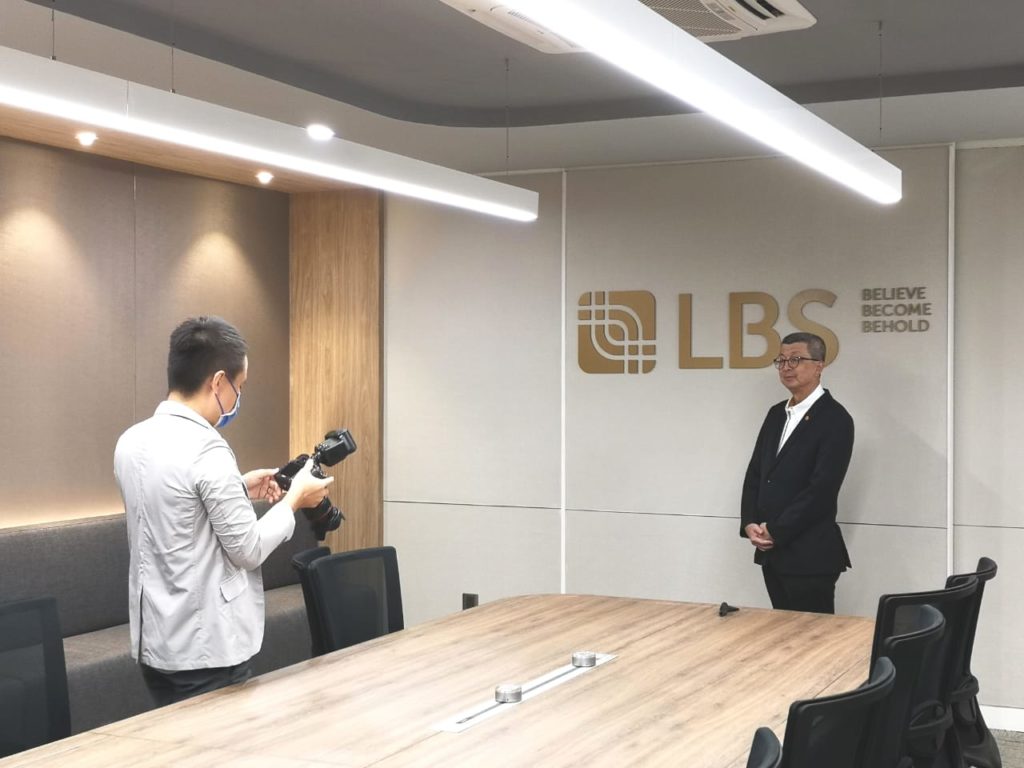
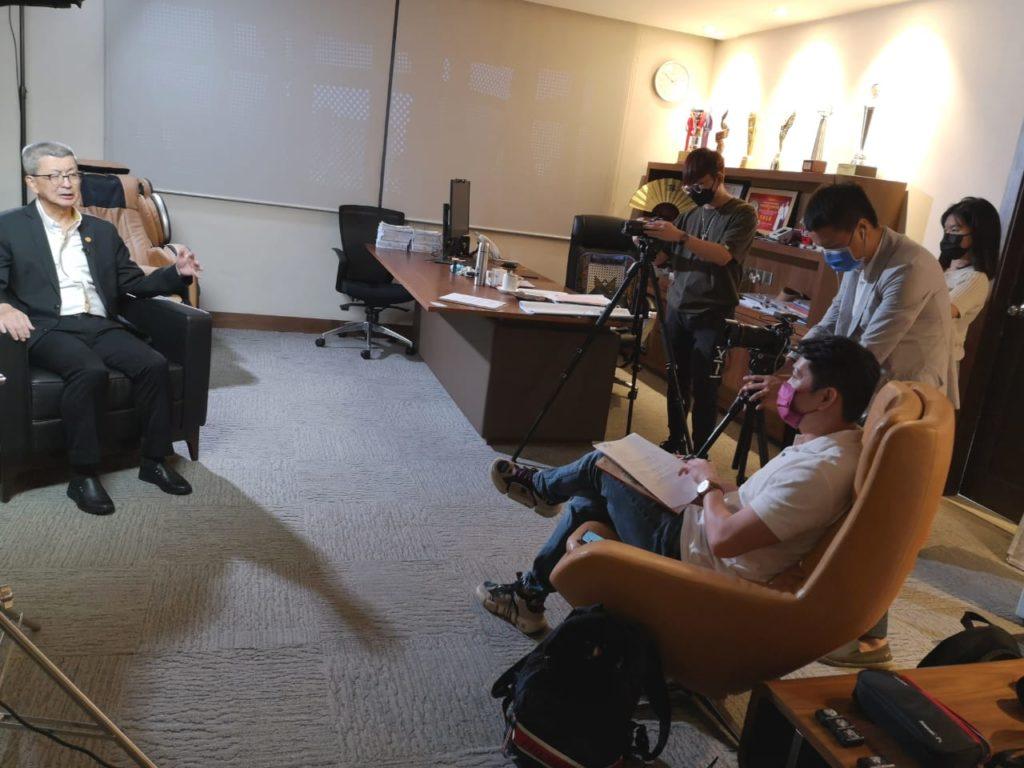
Malaysia Book of Records – Most Show House Units under One Sales Gallery
D
on
June 29, 2022
After our first conferment of the Malaysia Book of Records, we are back at it again but this time for the most show house units under one sales gallery!
Full-size show houses and with a wide variety of types under one roof! Visit at the KITA @ Cybersouth sales gallery or visit our virtual gallery at https://virtualfair.lbs.com.my/
LBS Bina 22nd Annual General Meeting (“AGM”)
D
on
June 29, 2022
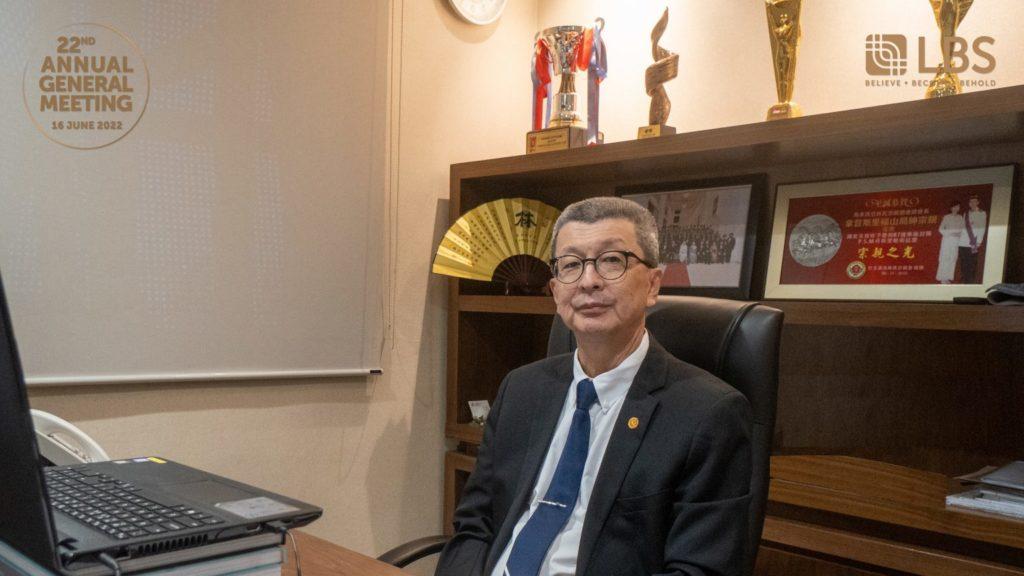
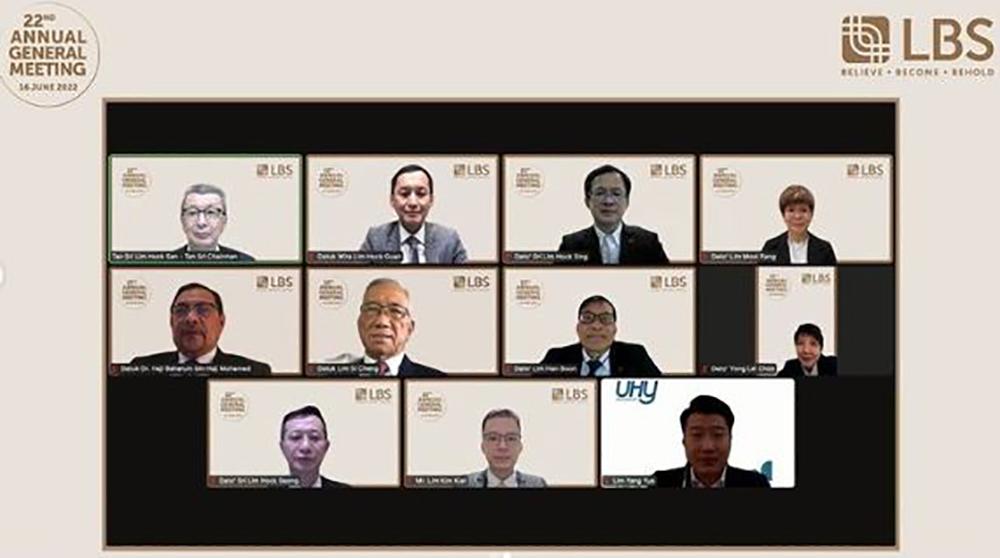
For a more detailed update, feel free to access LBS’s press release below:
https://lbs.com.my/media/20220616-lbs-foresees-recovery-in-property-sector-in-2022/



